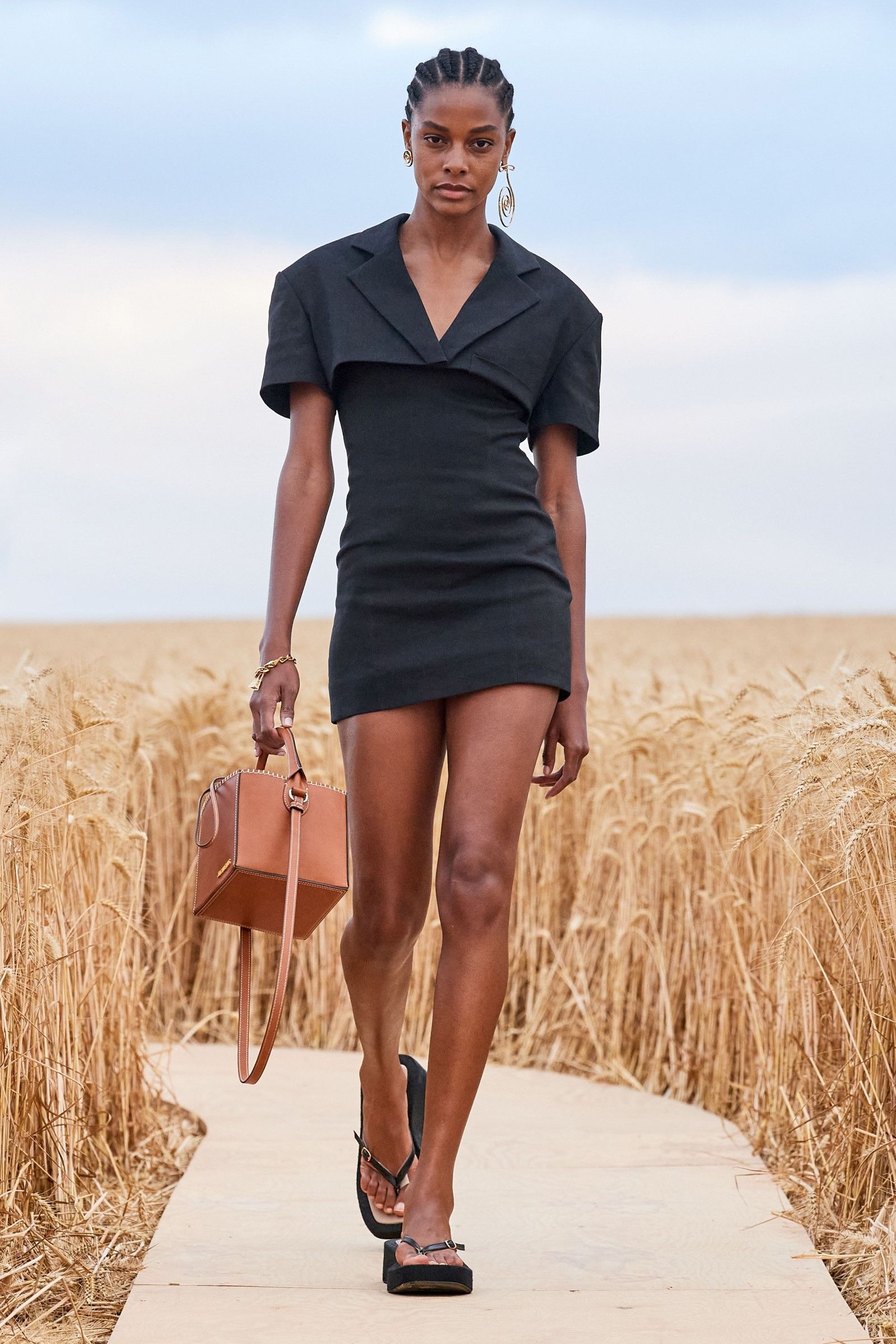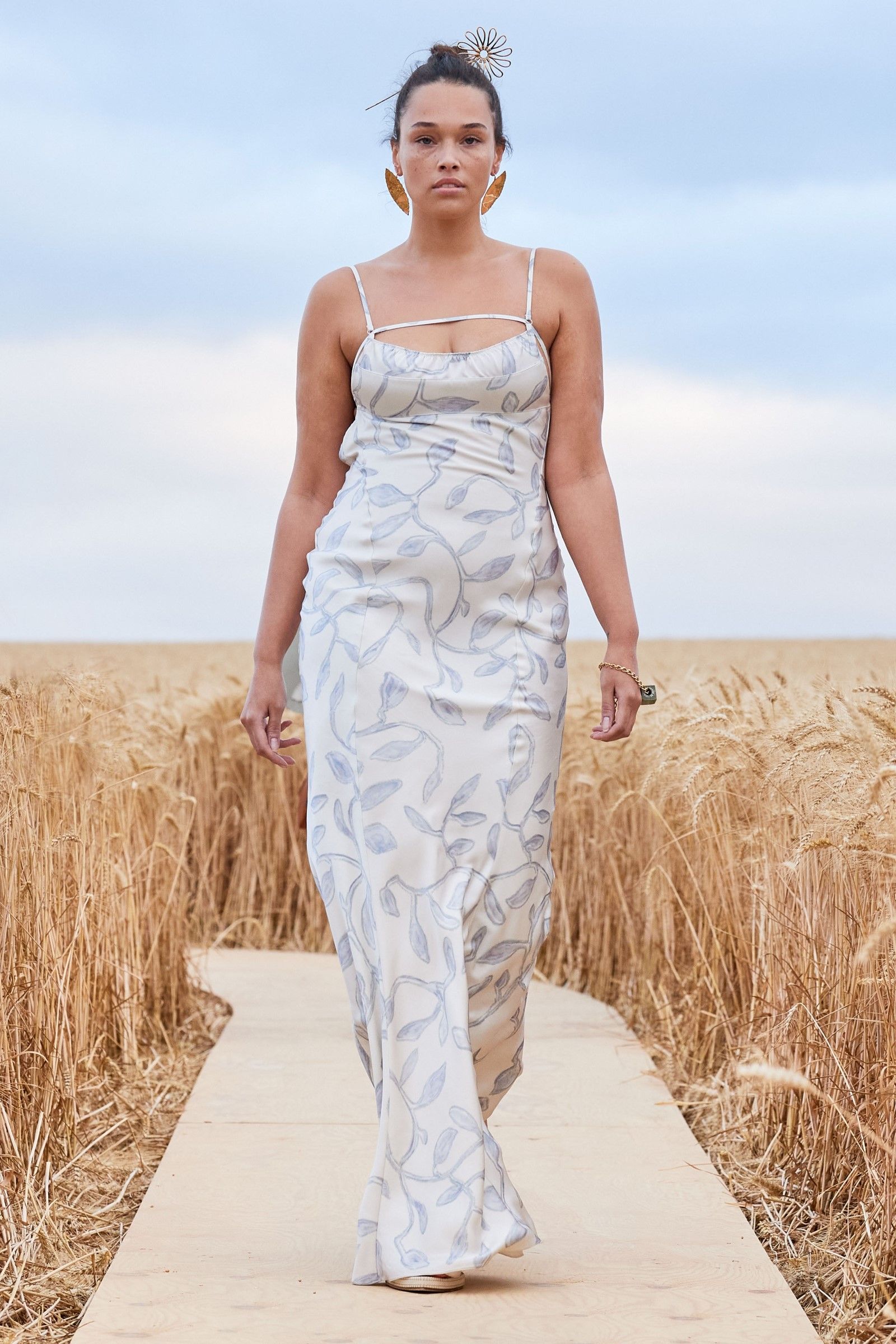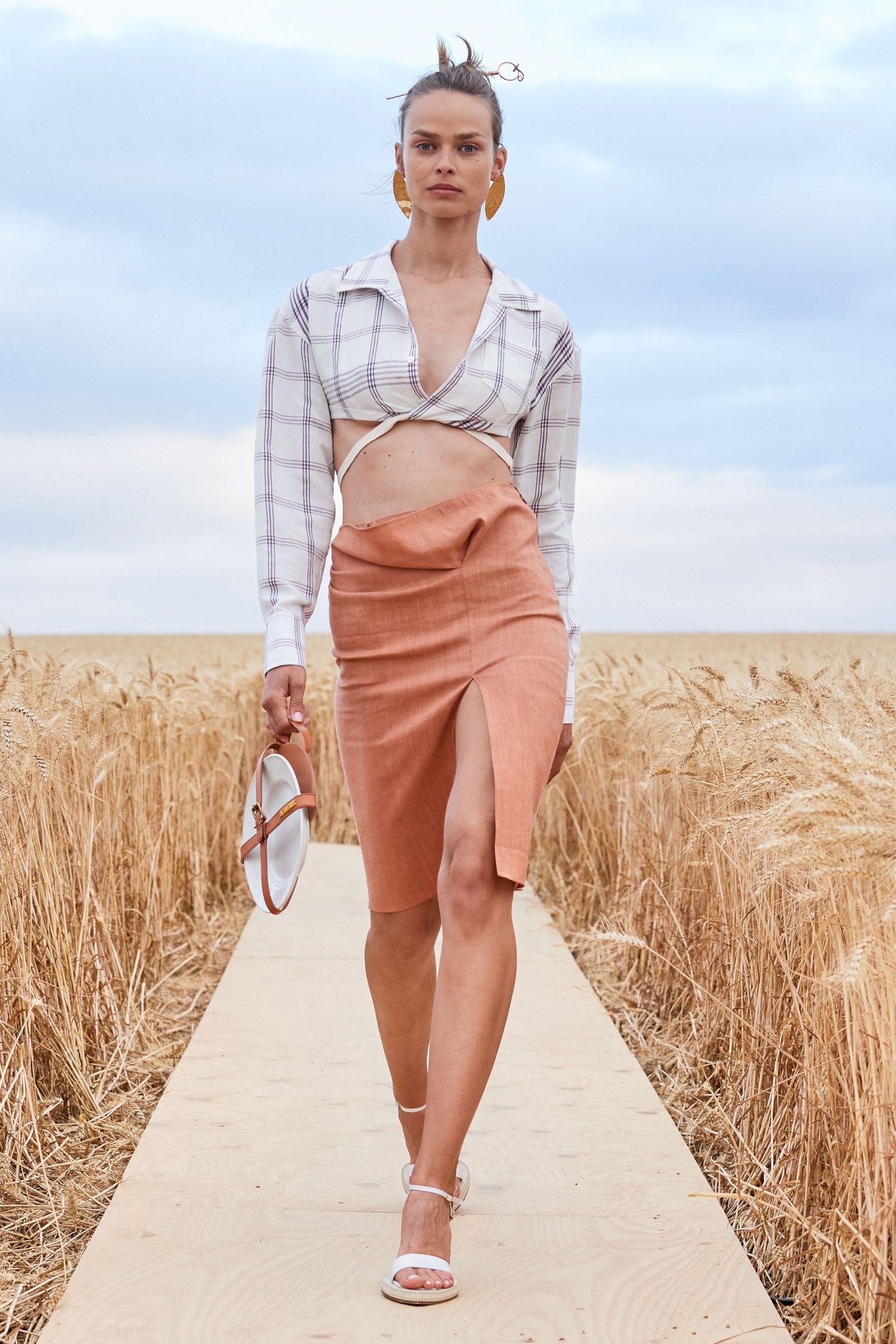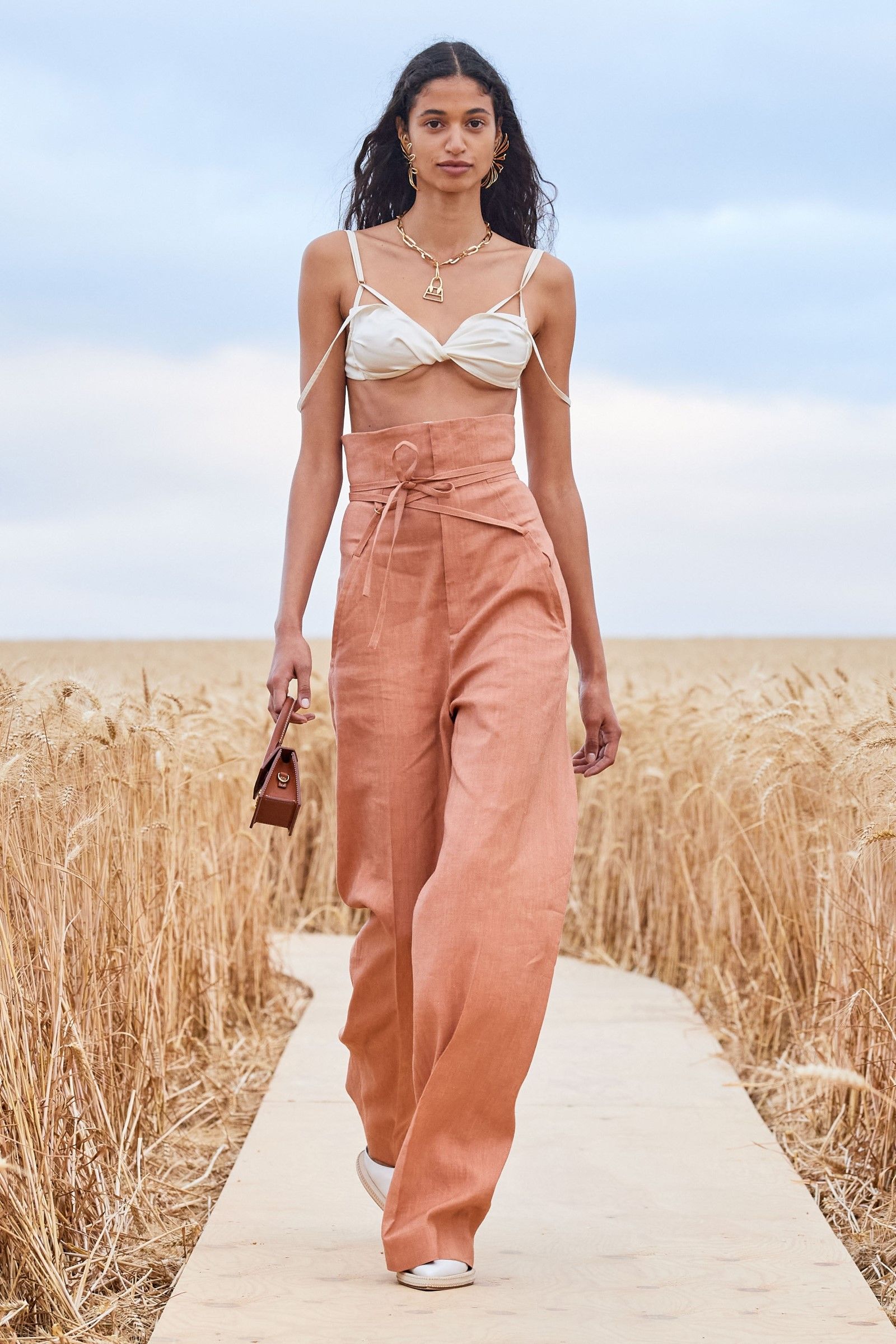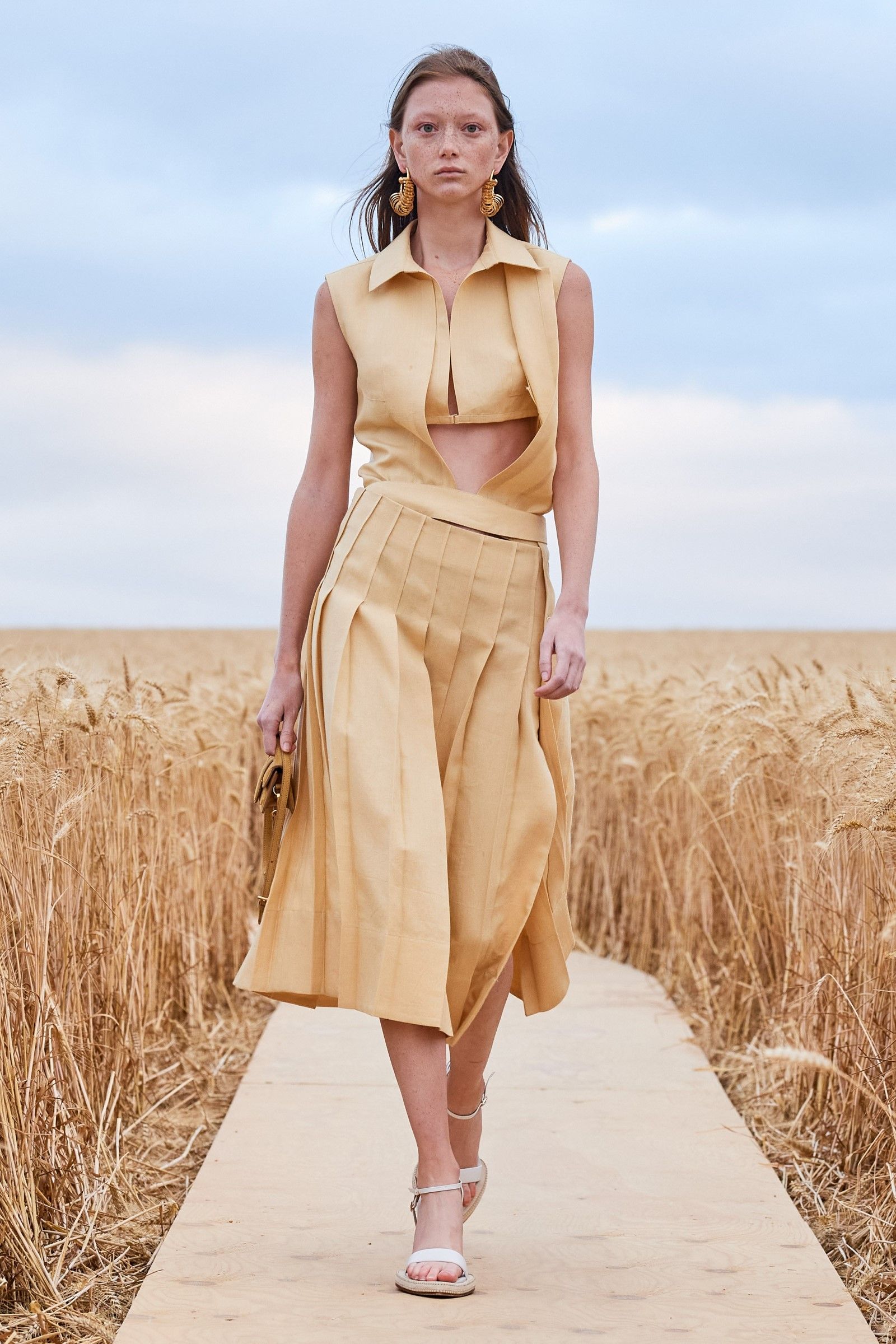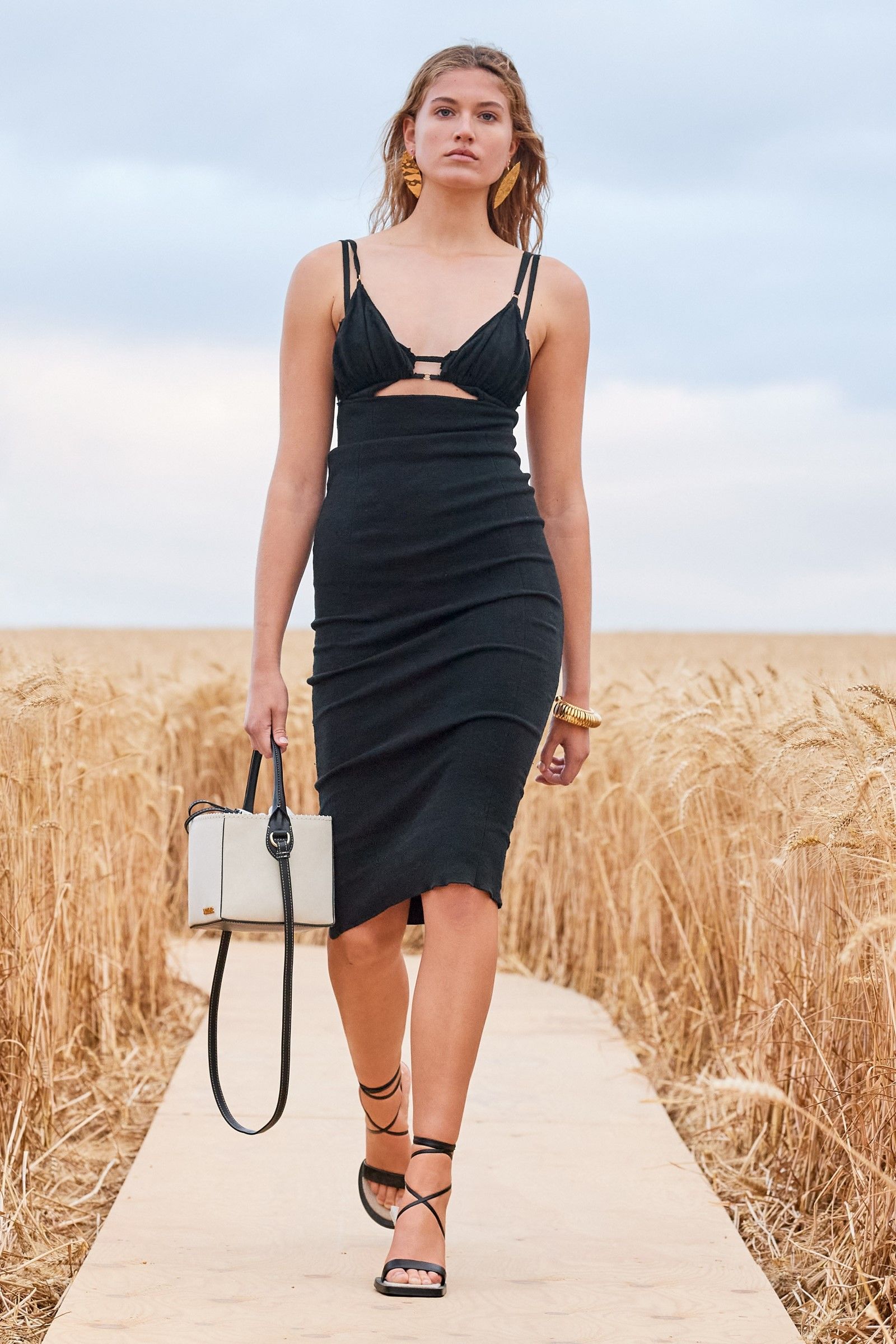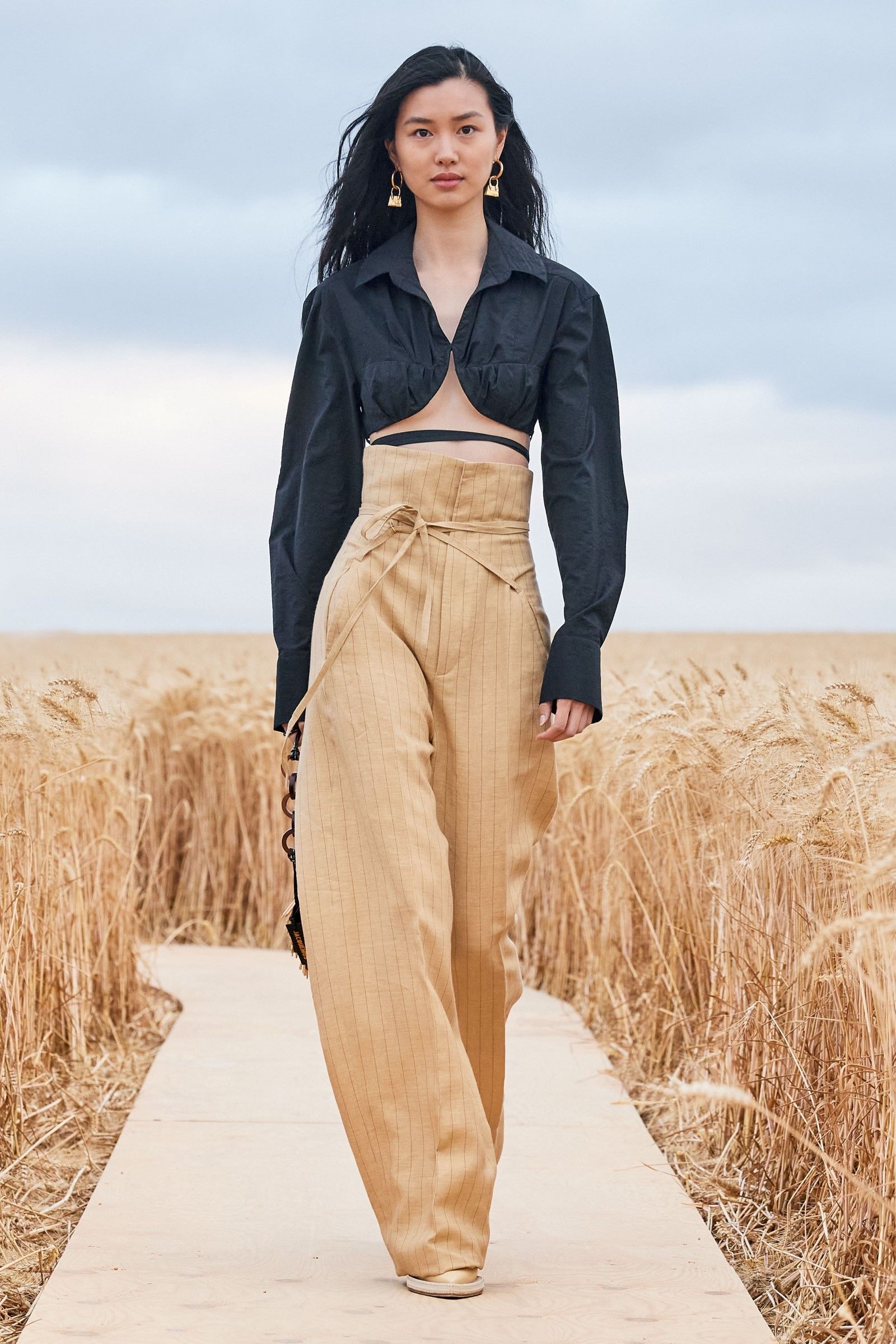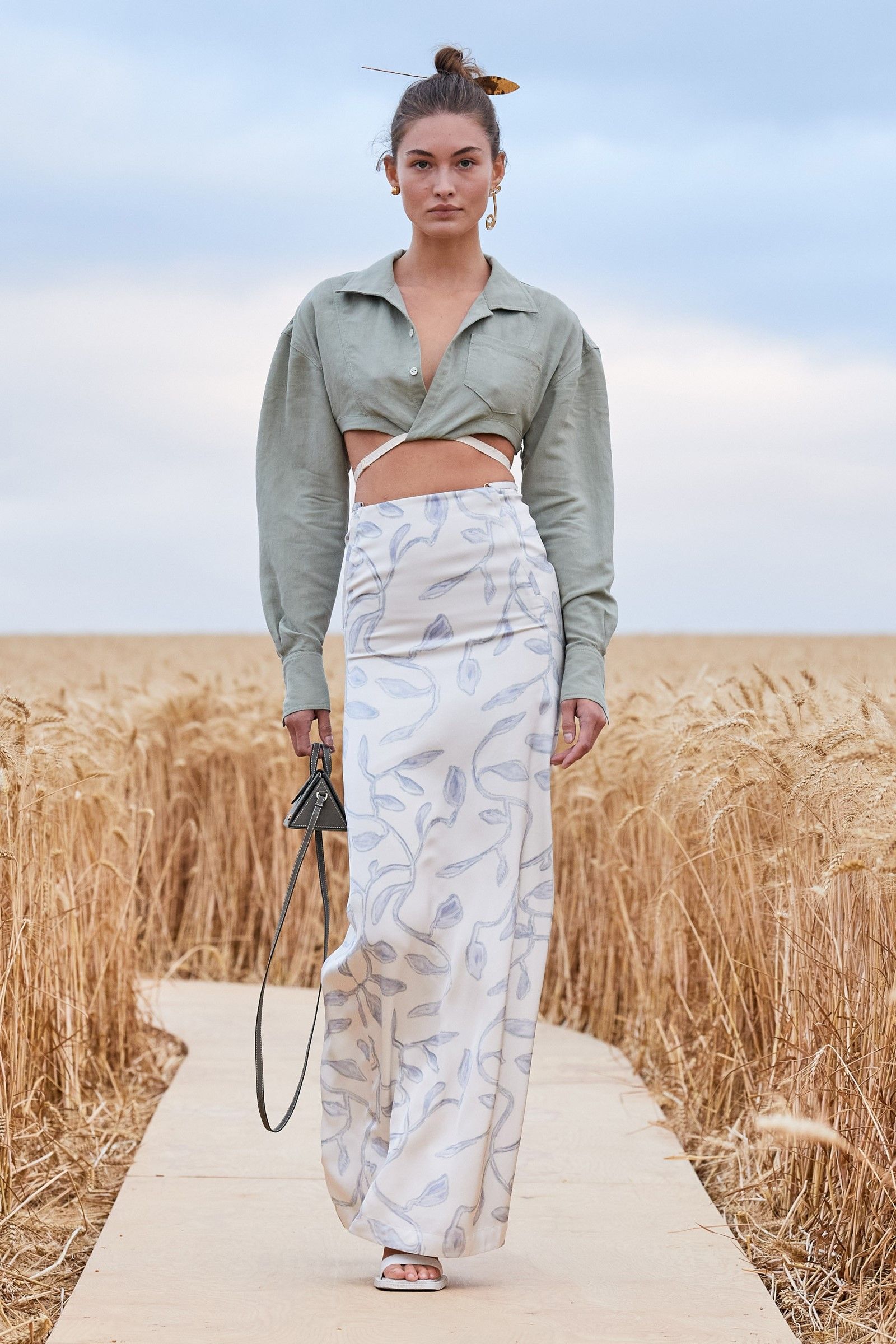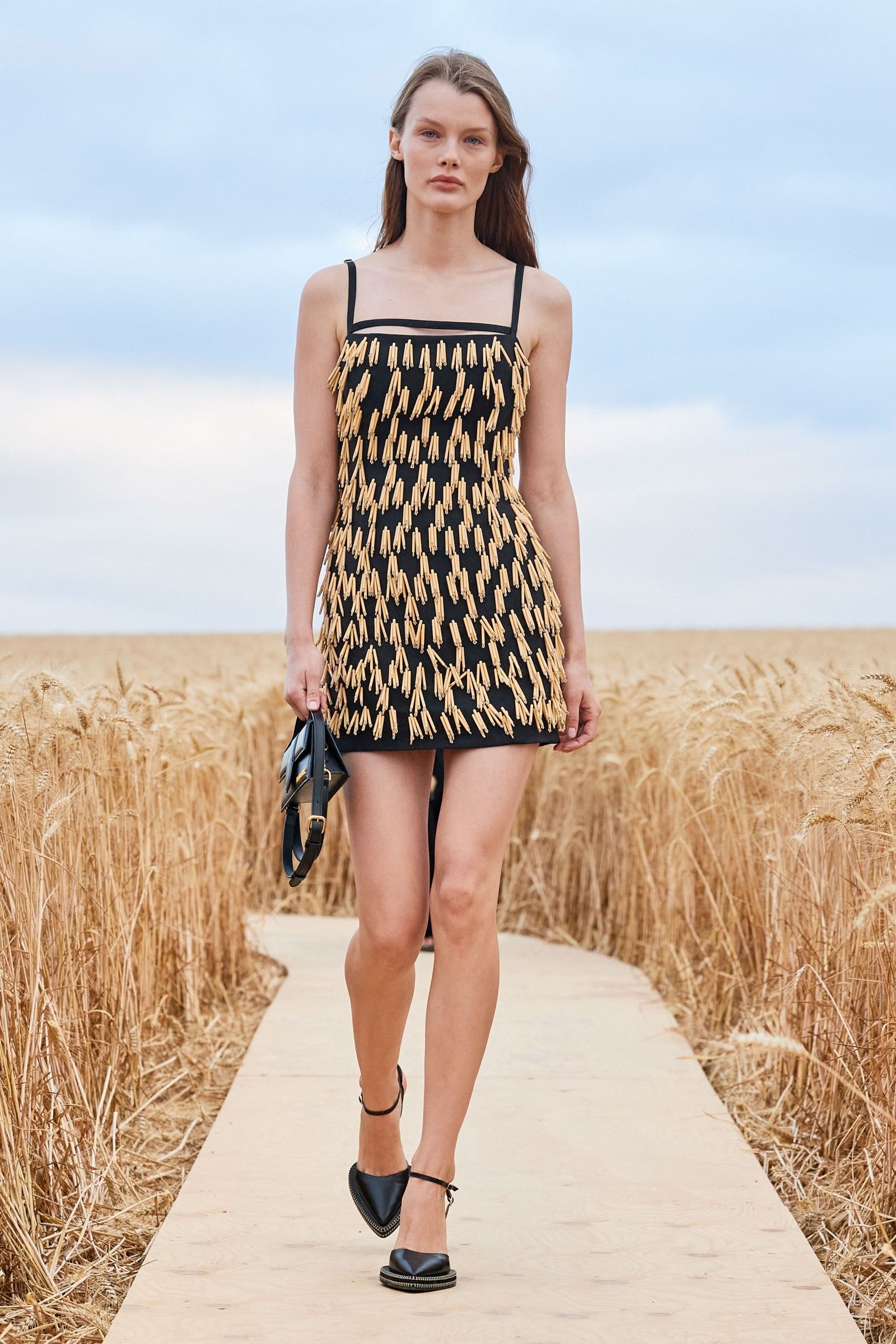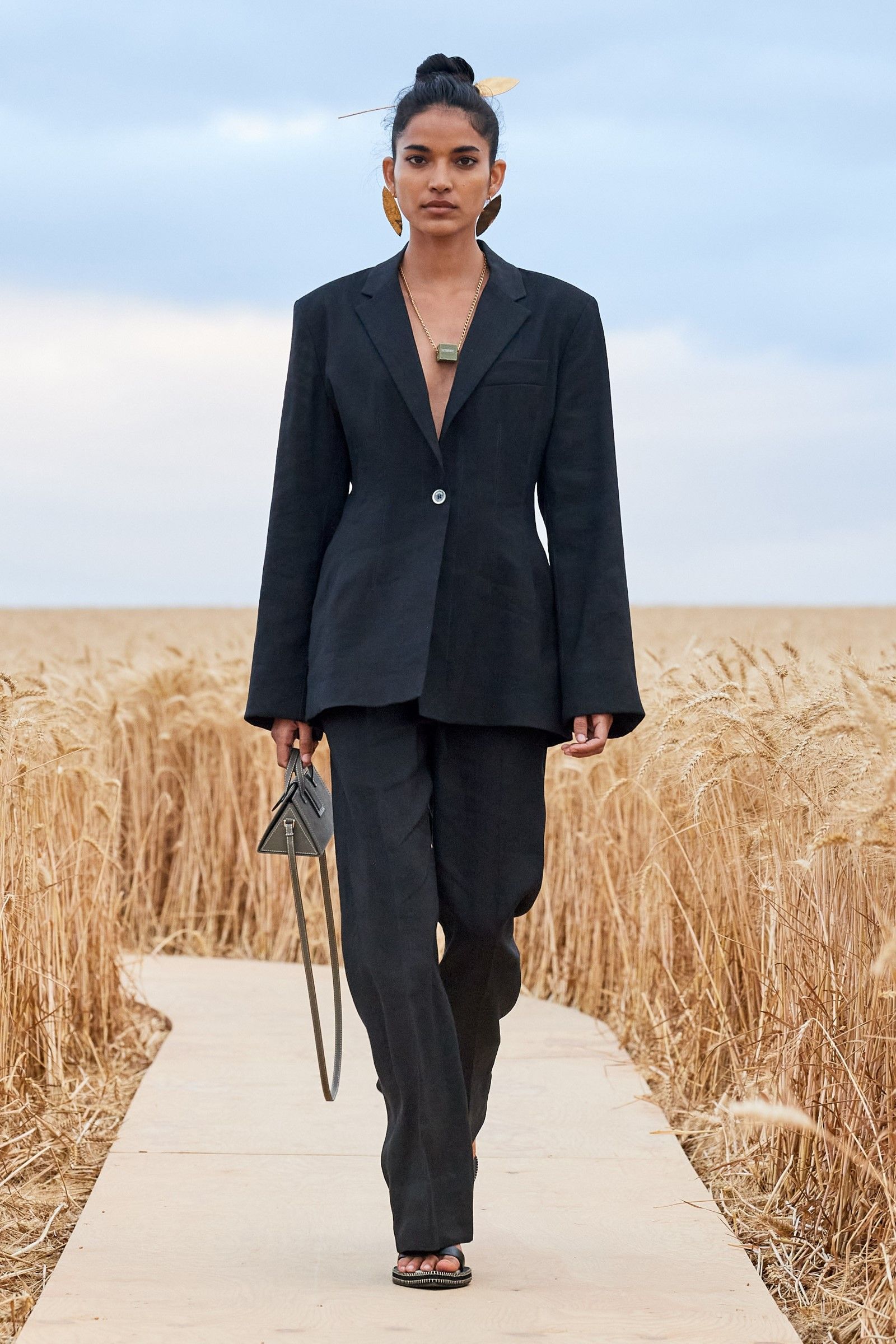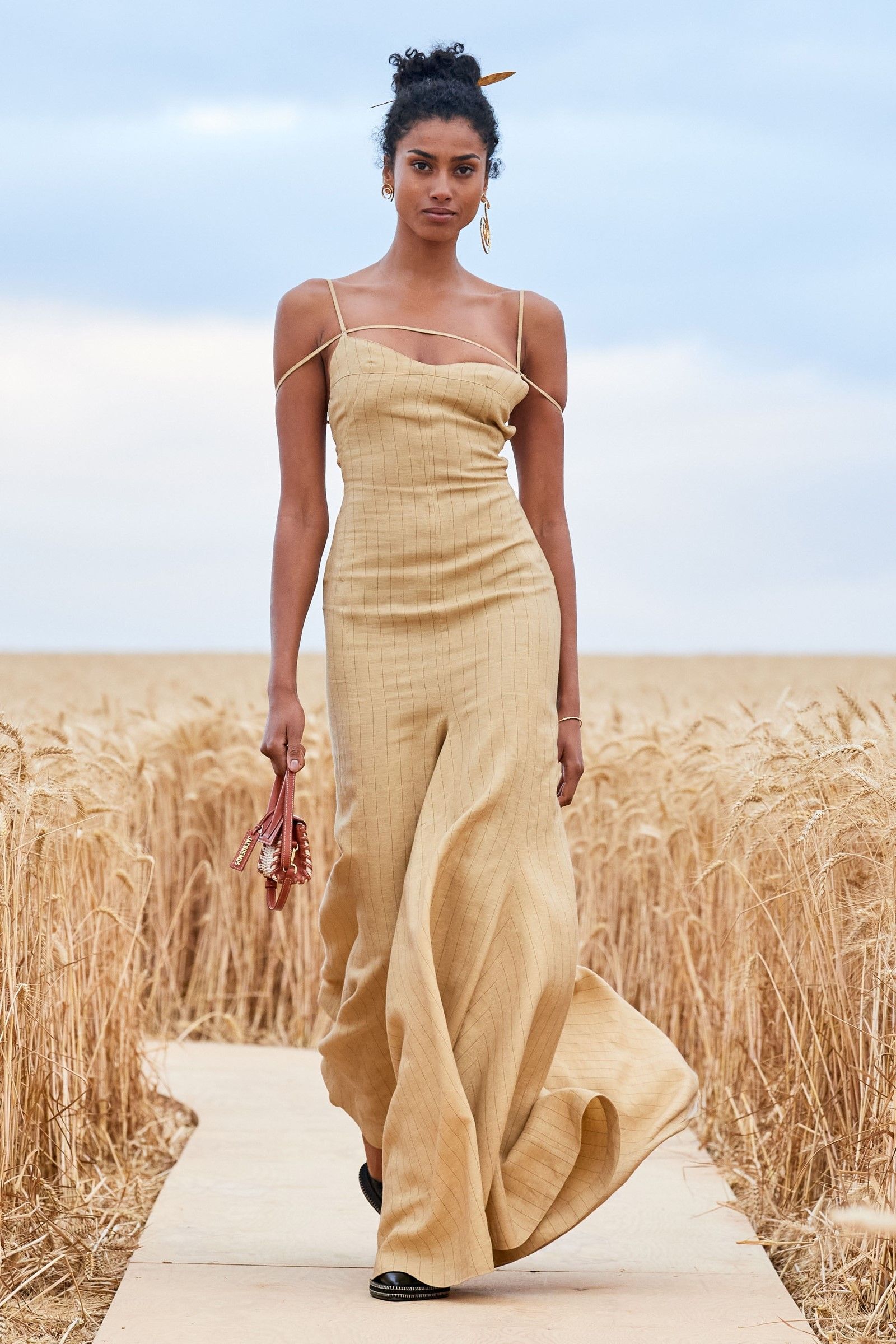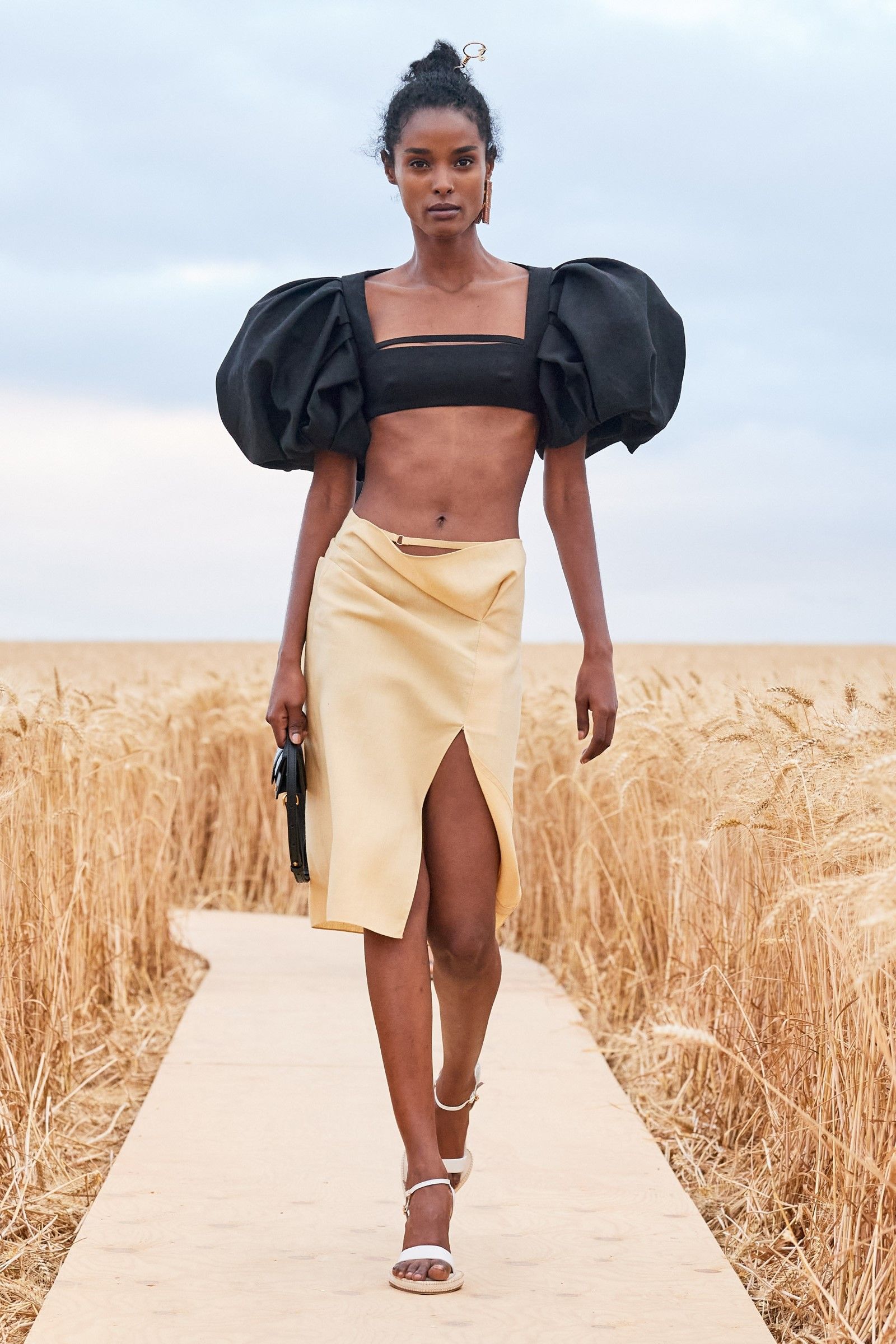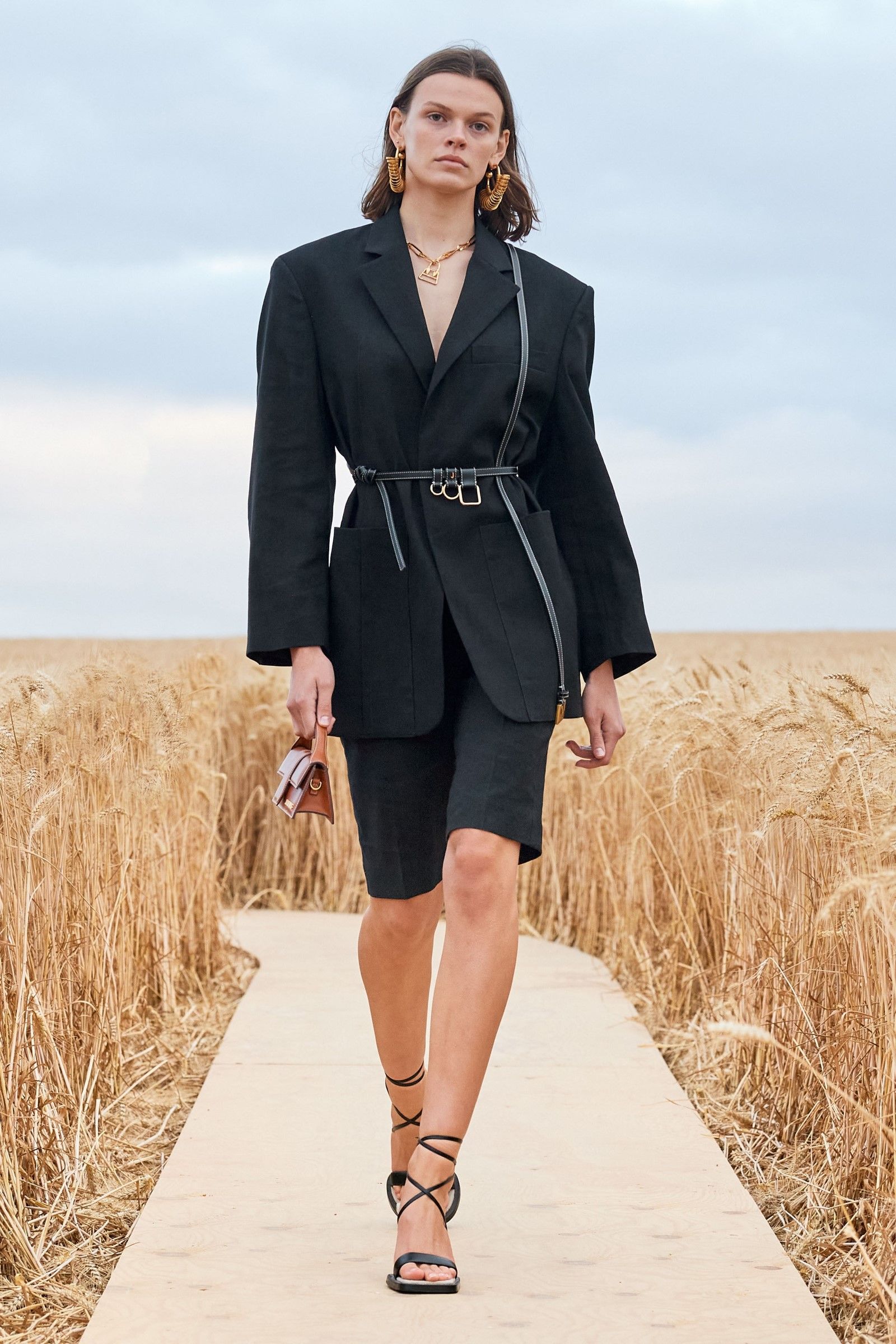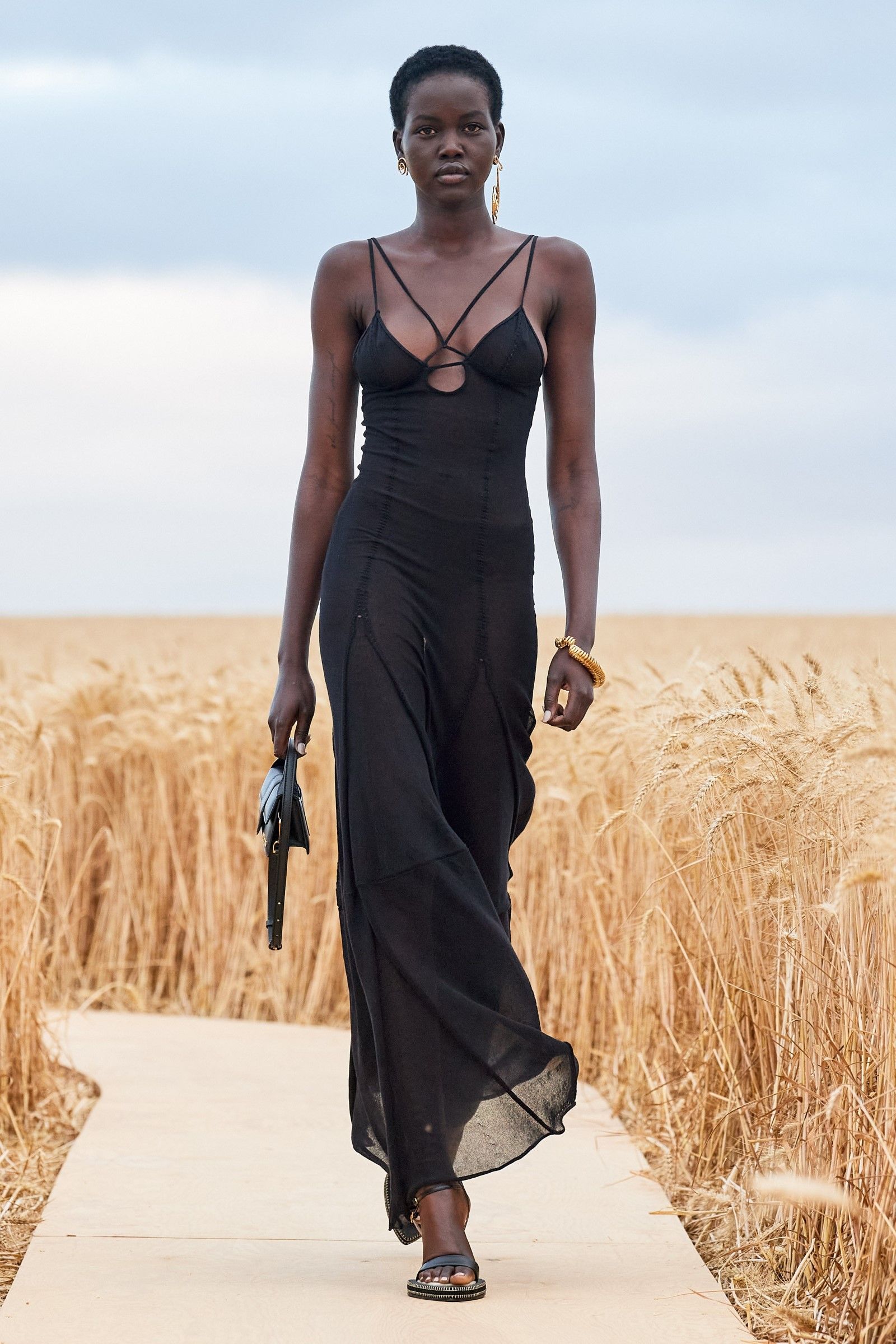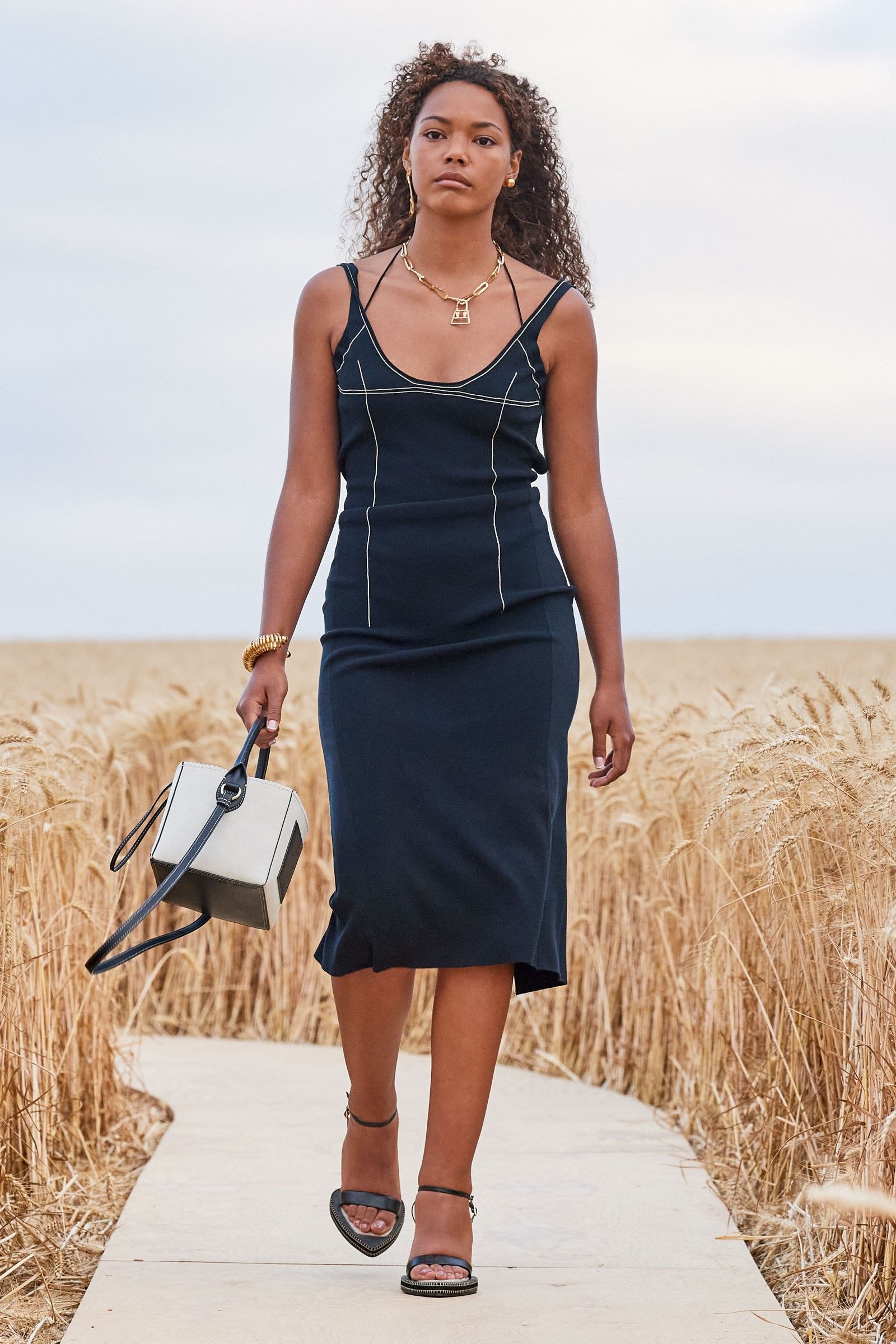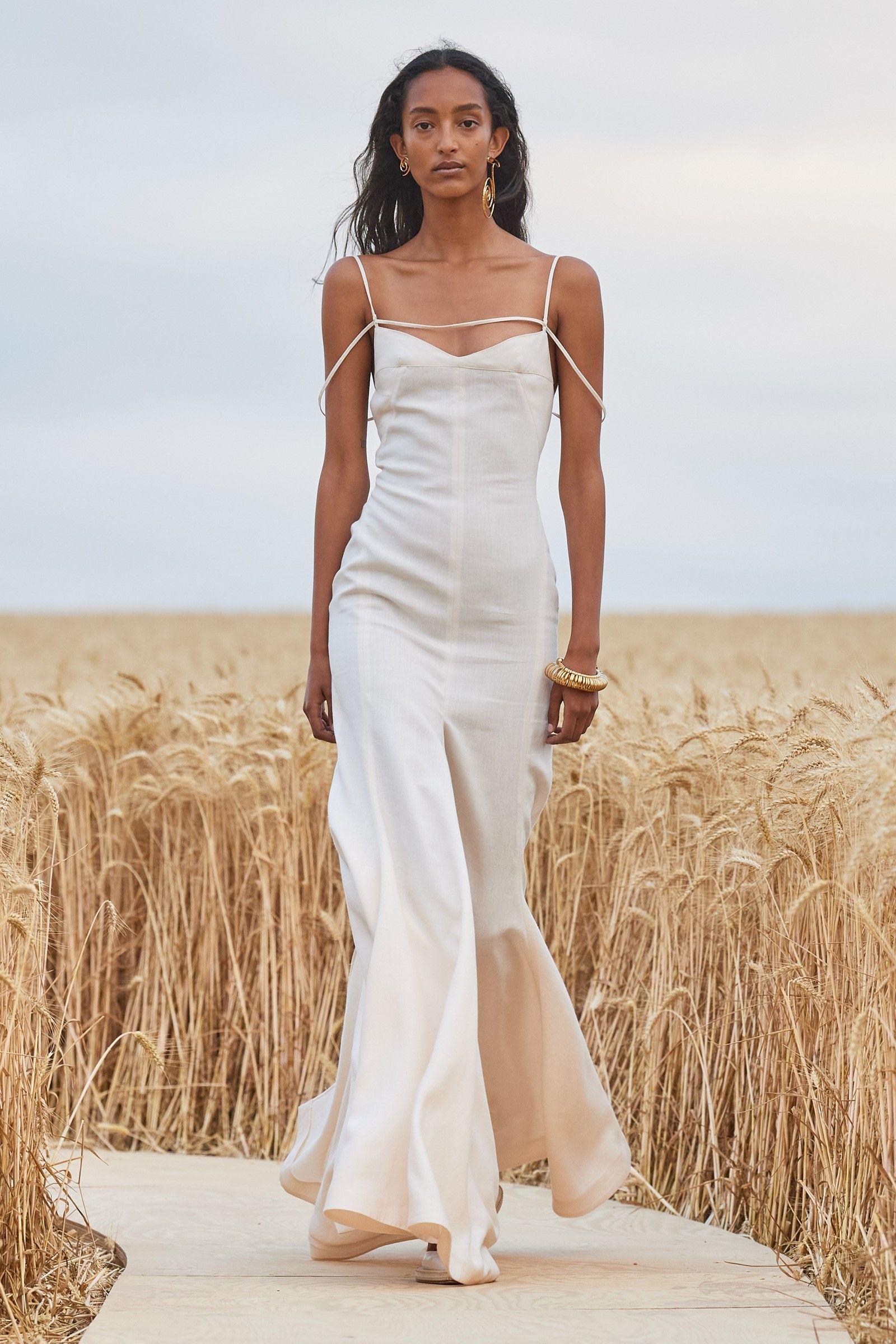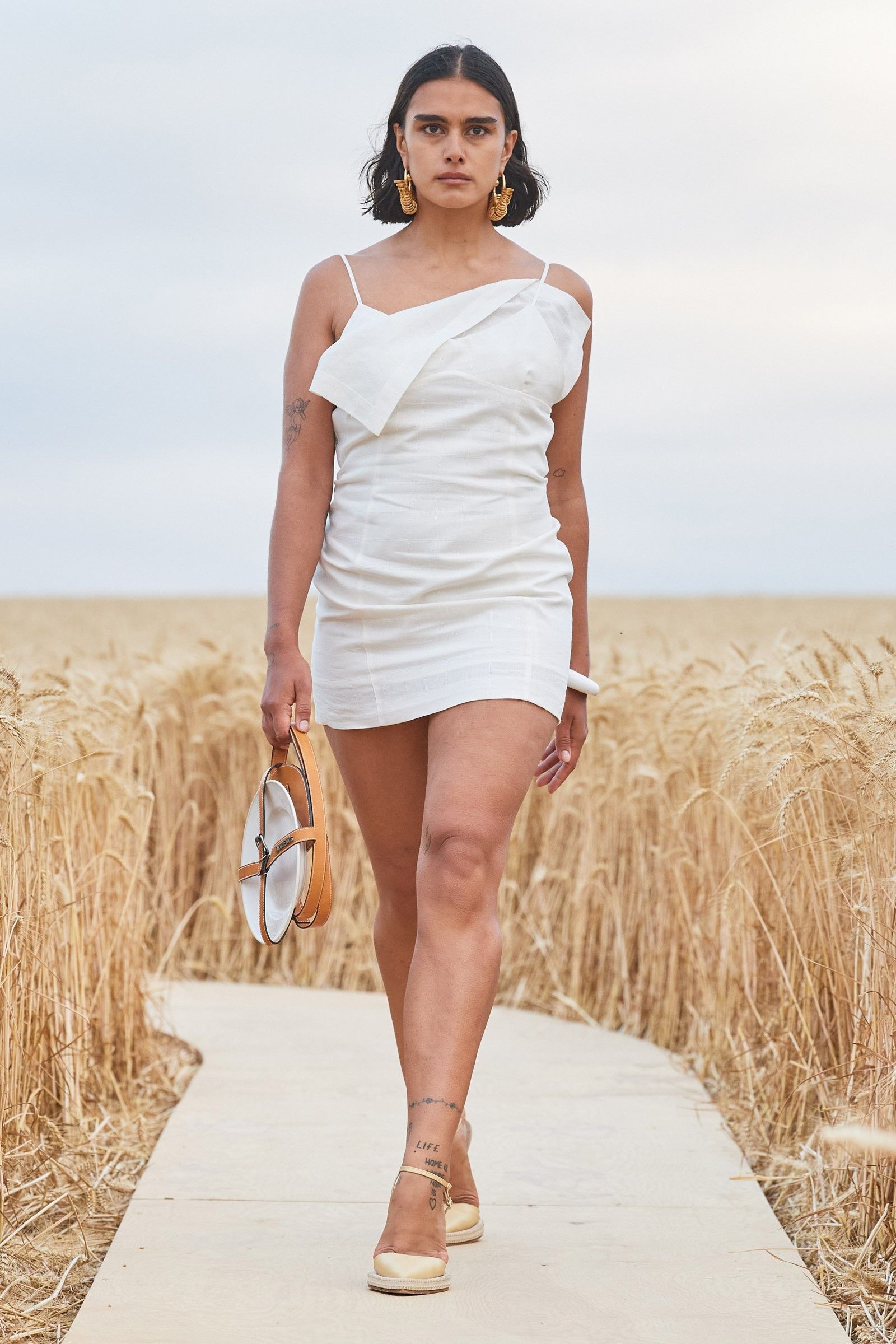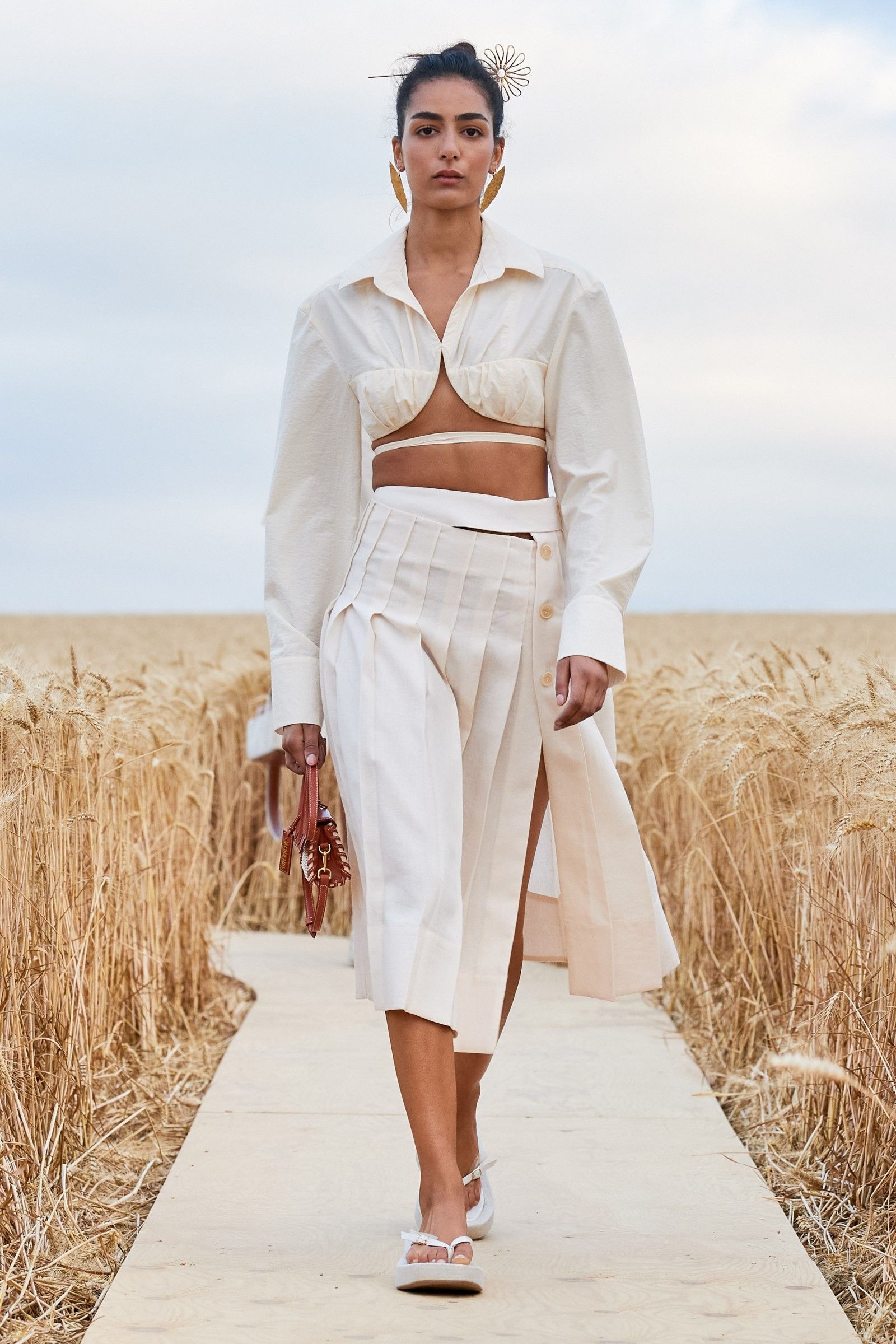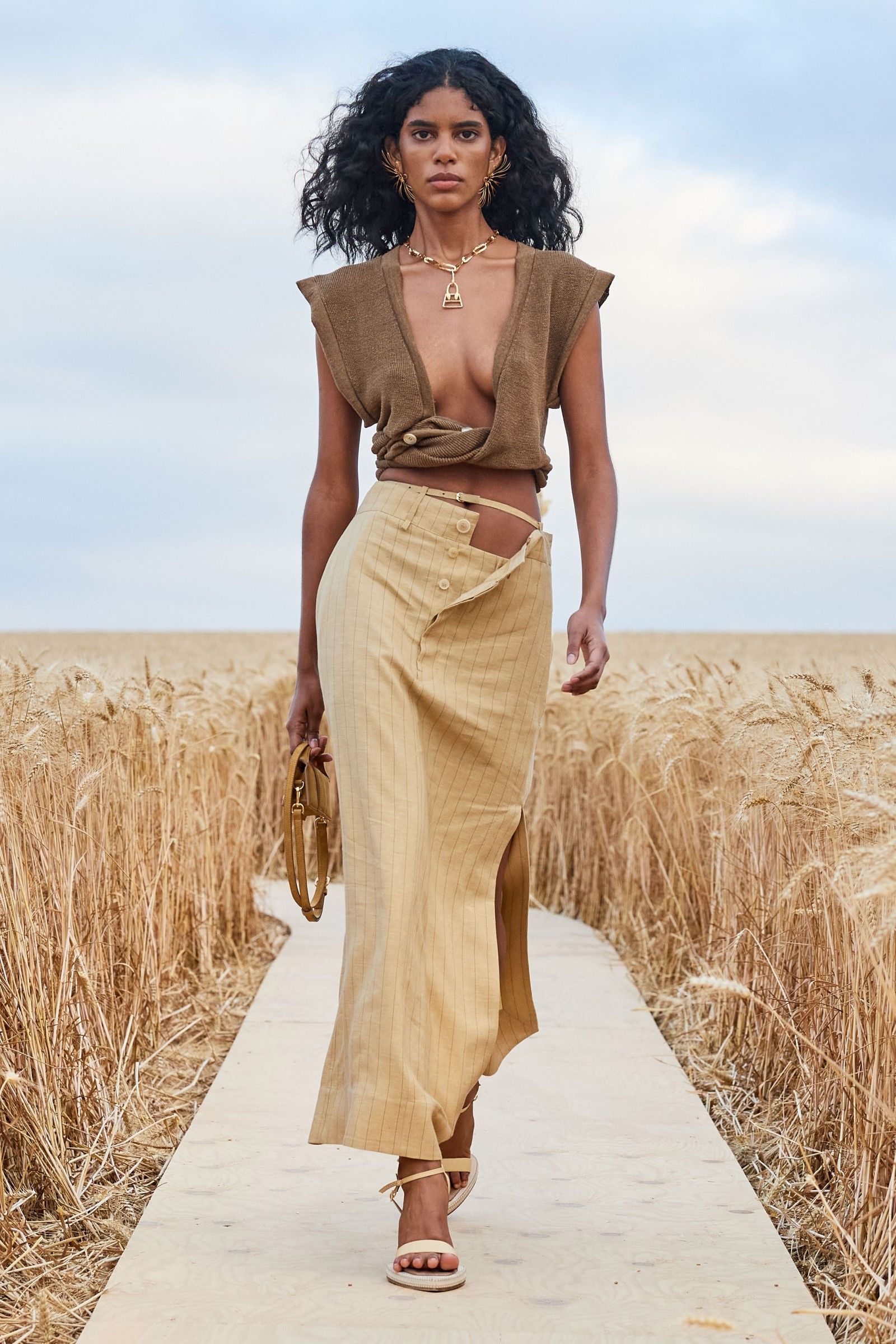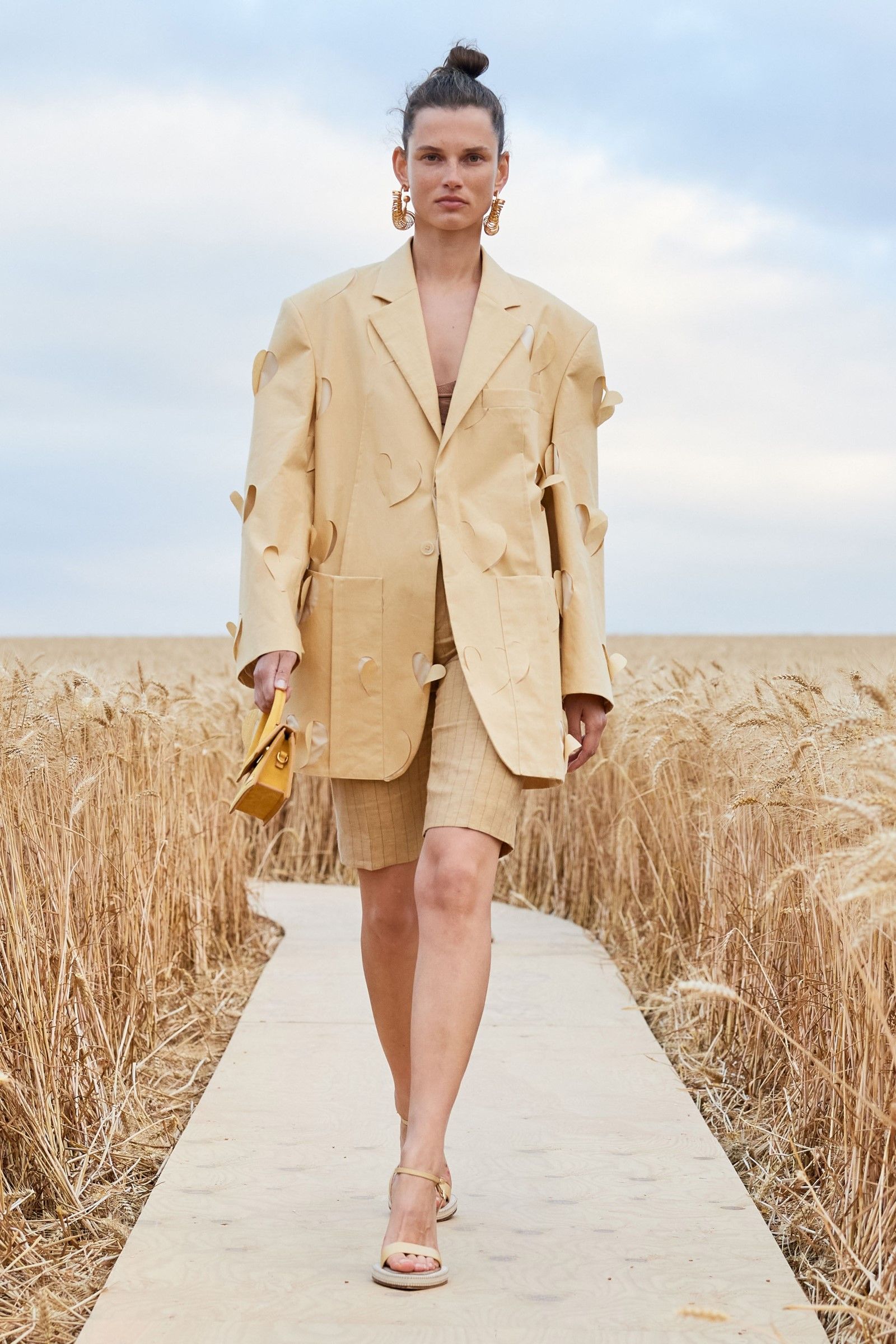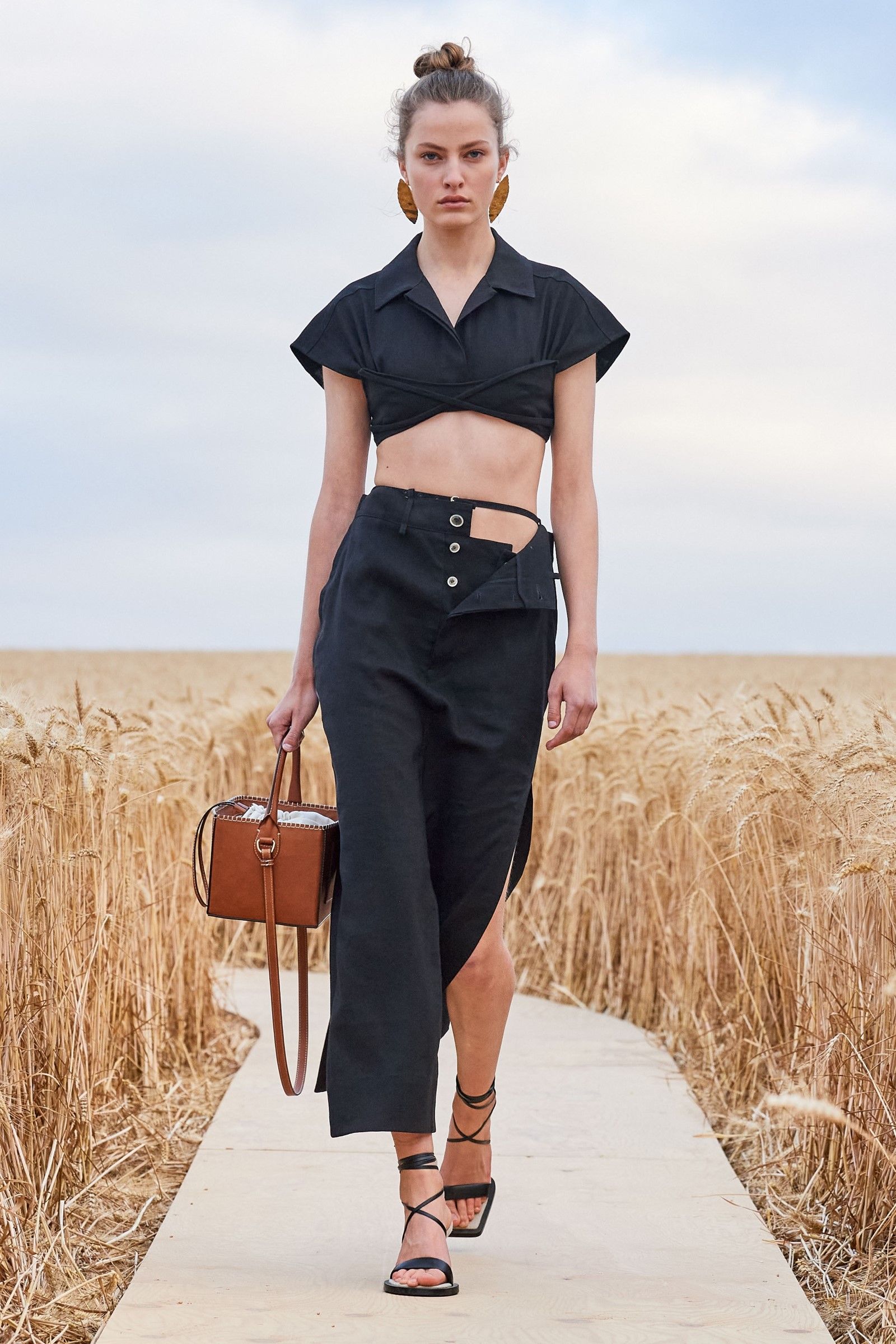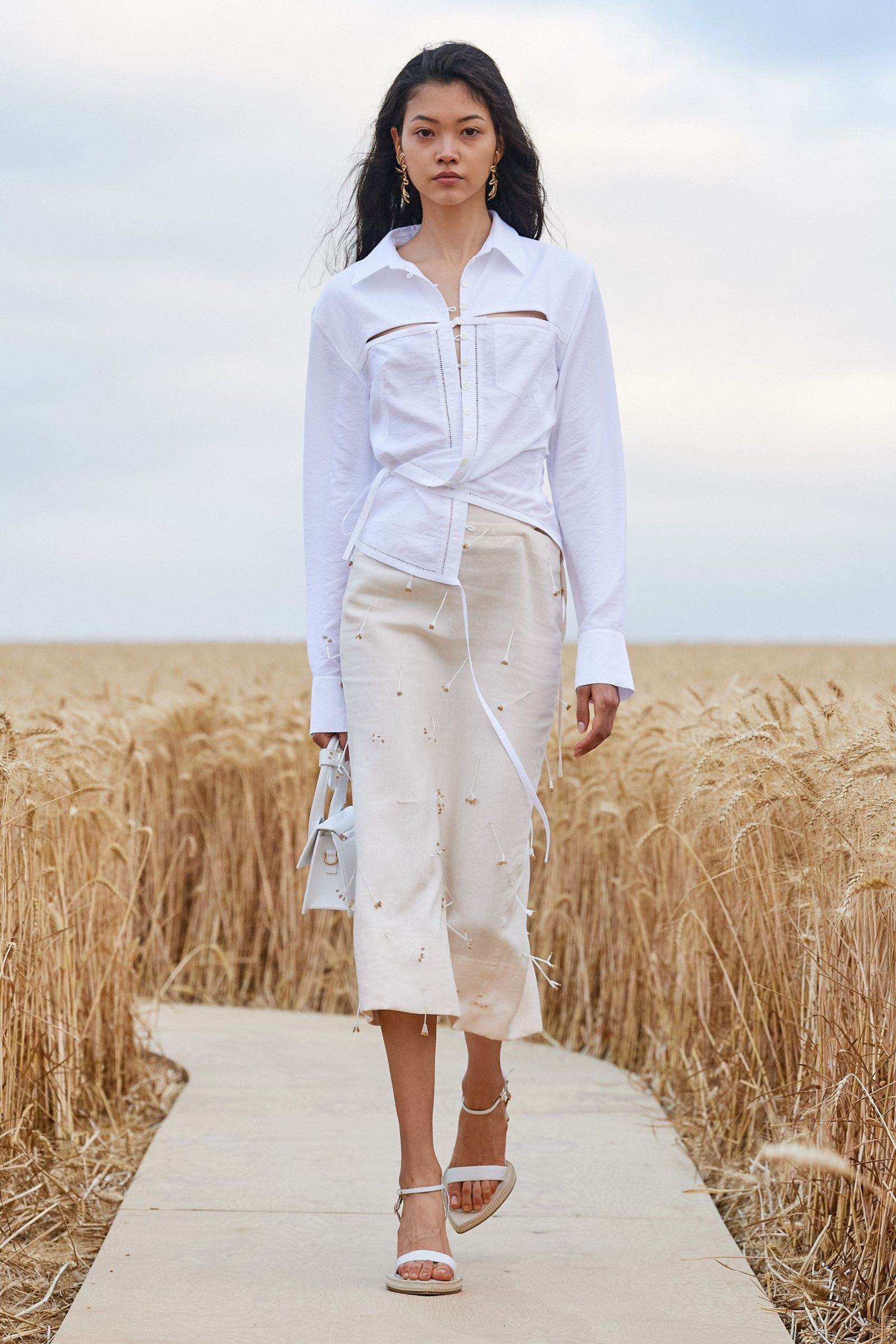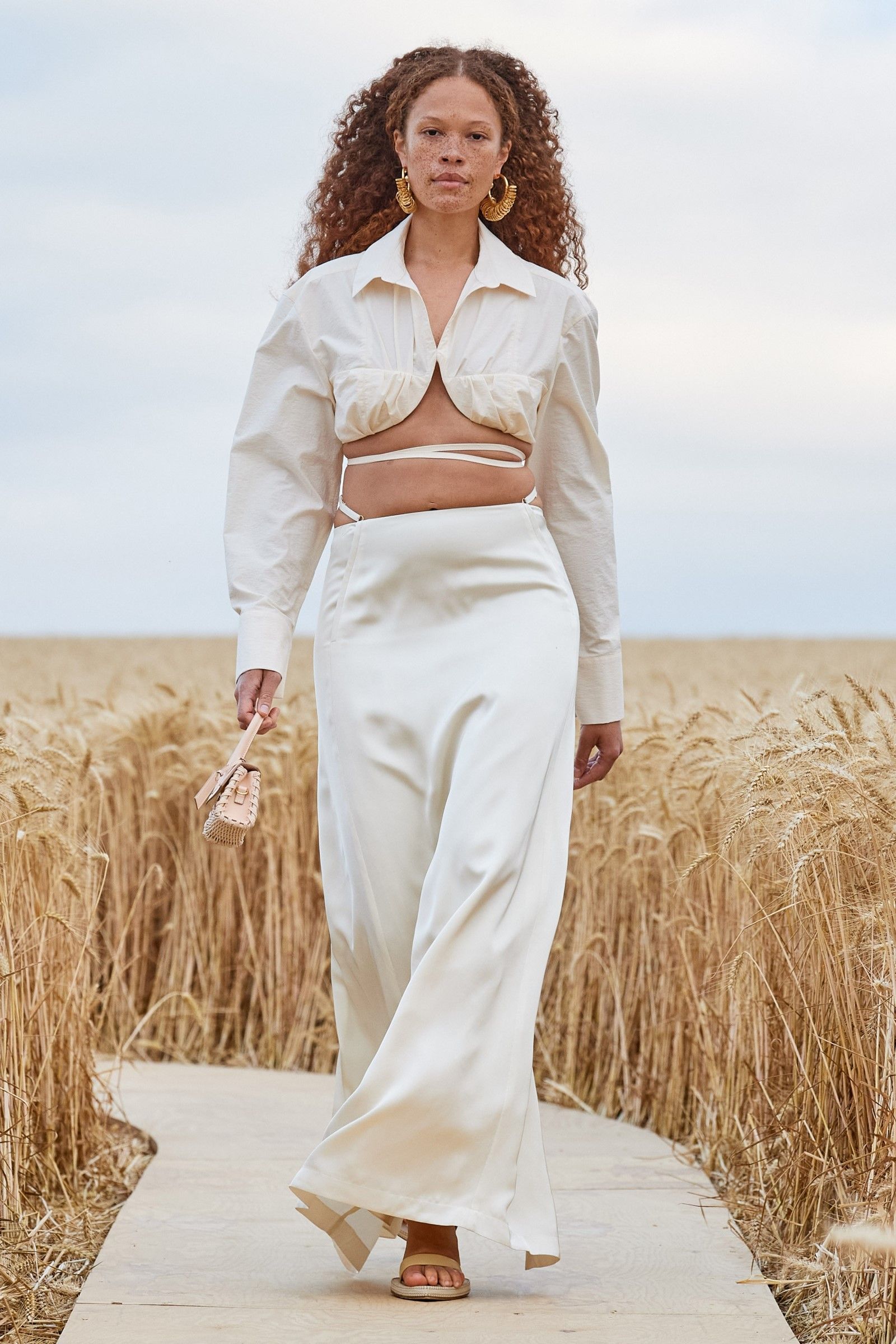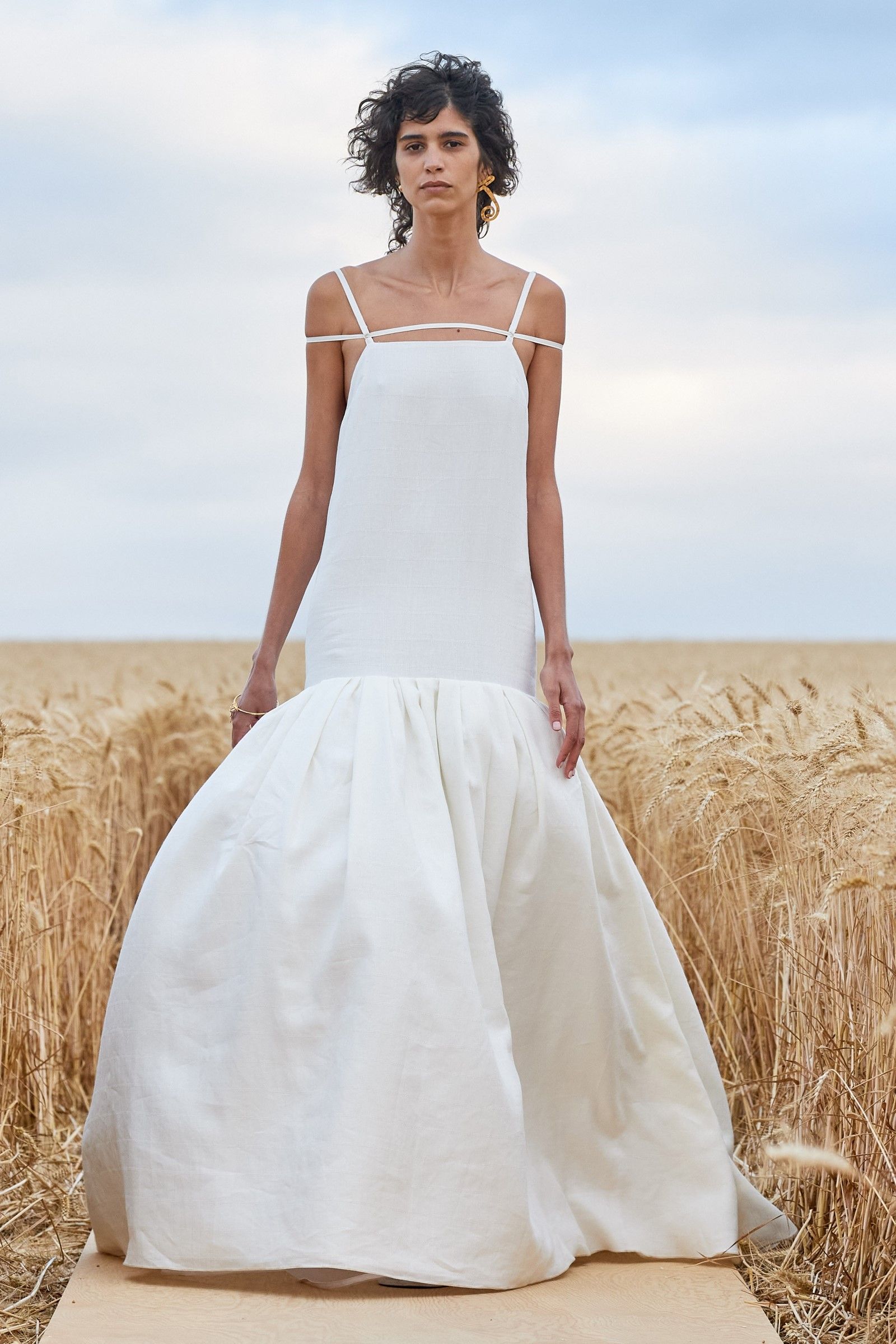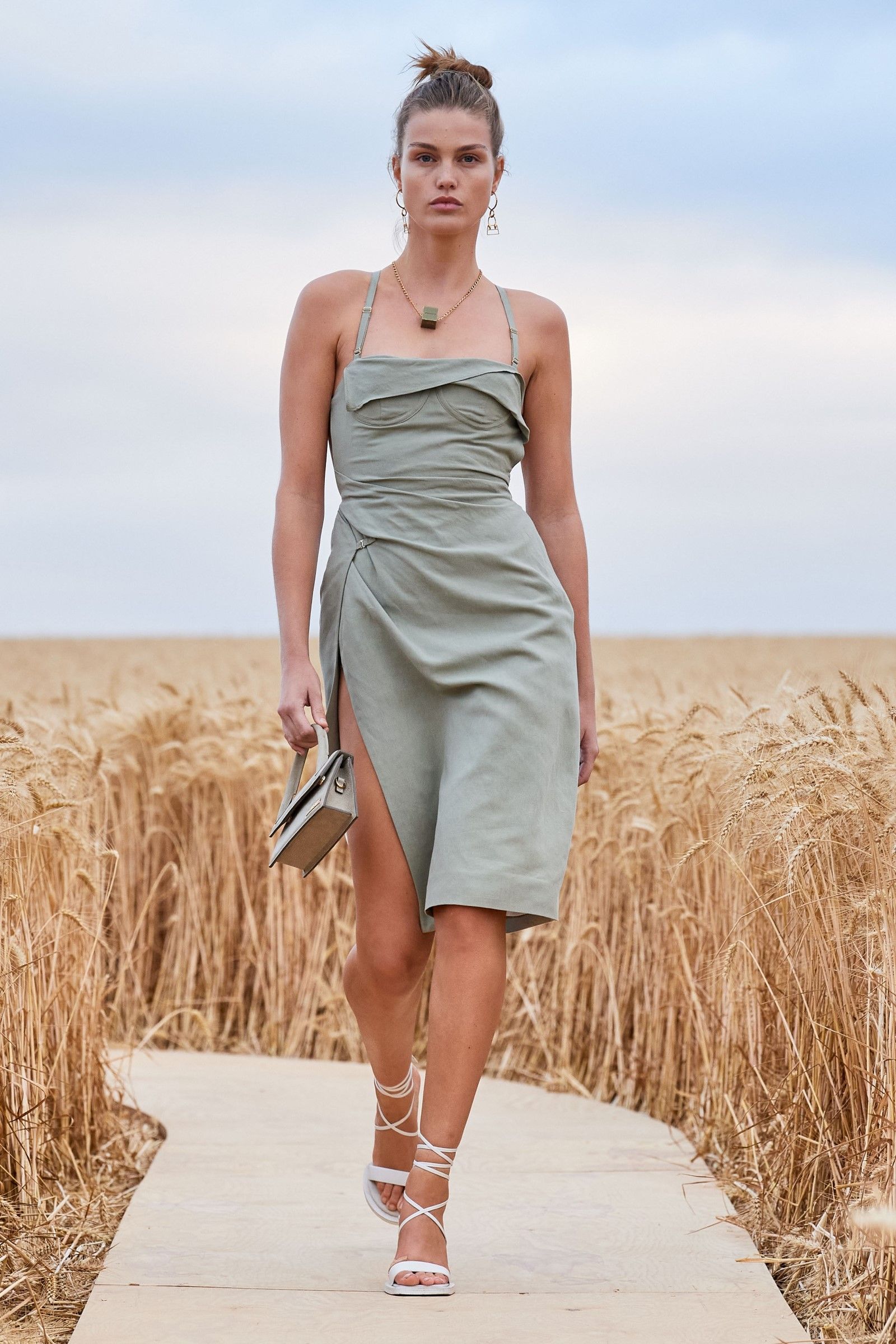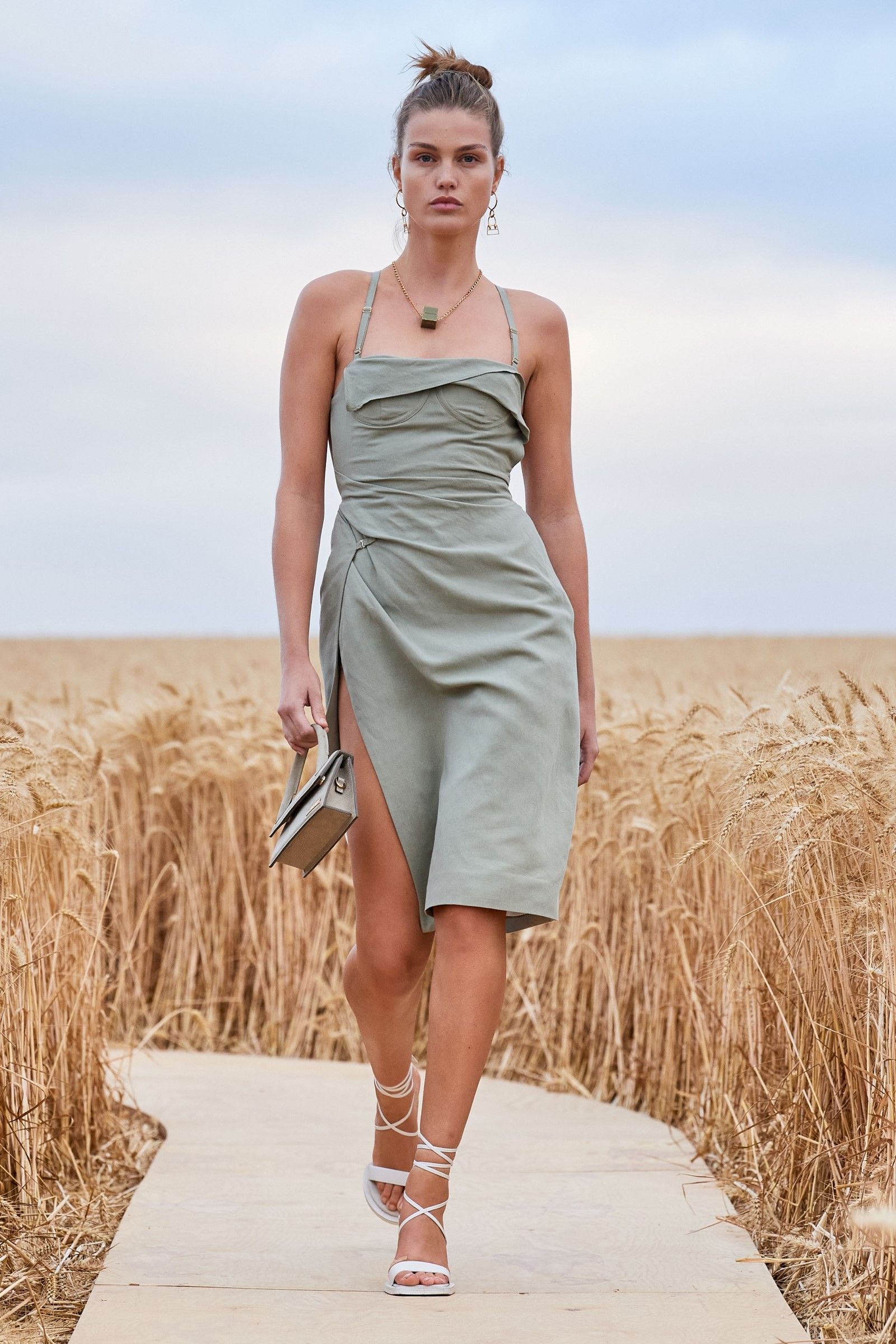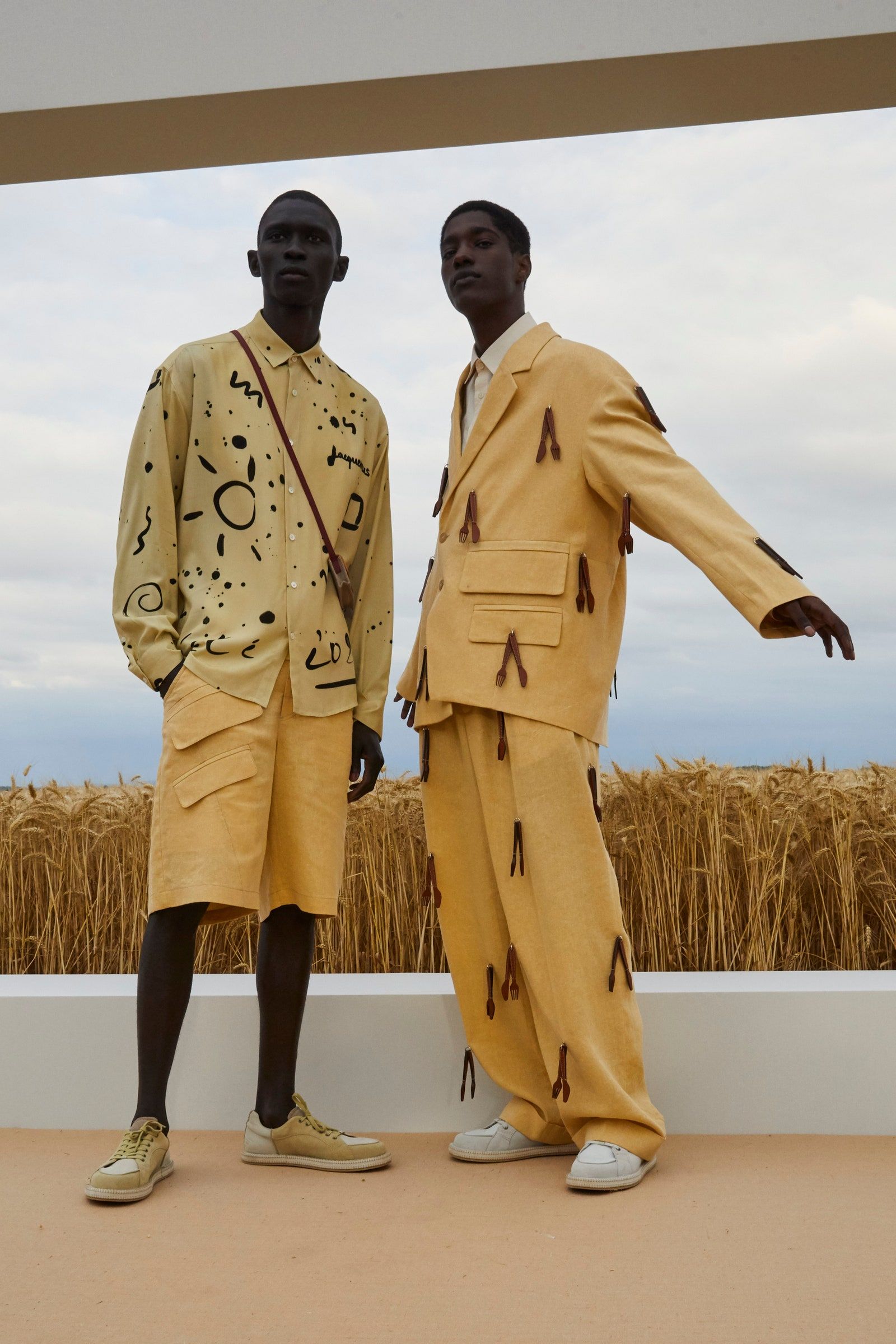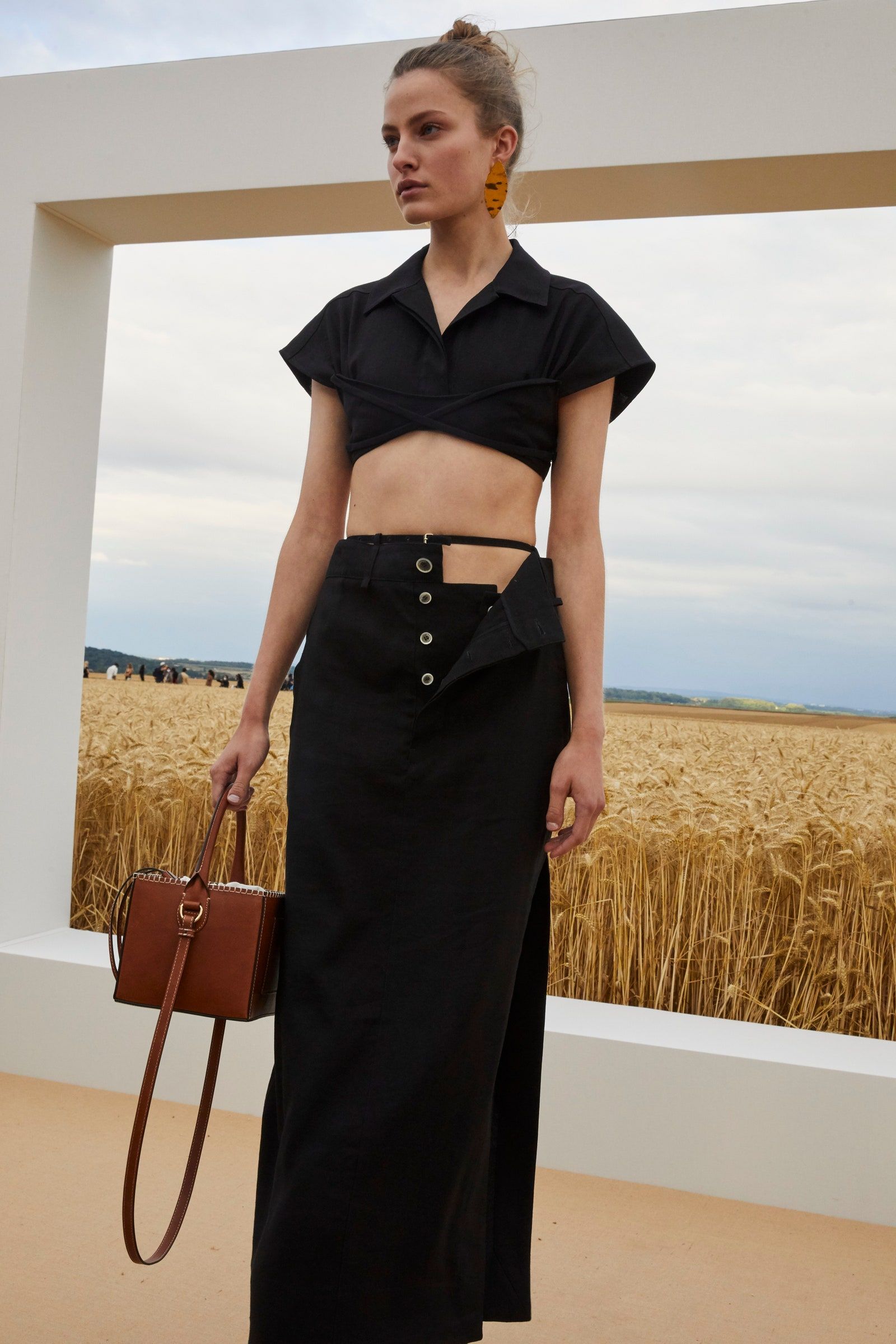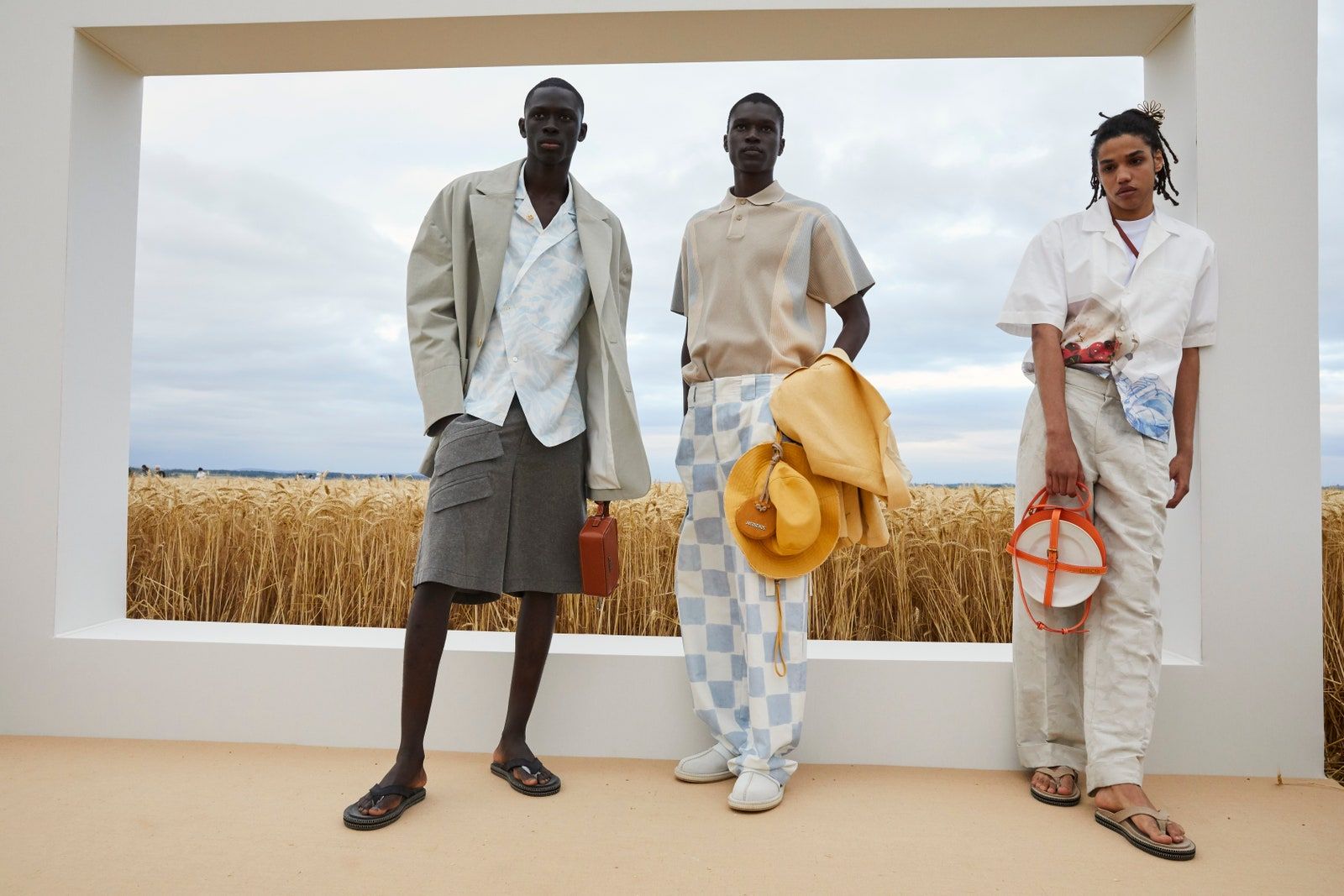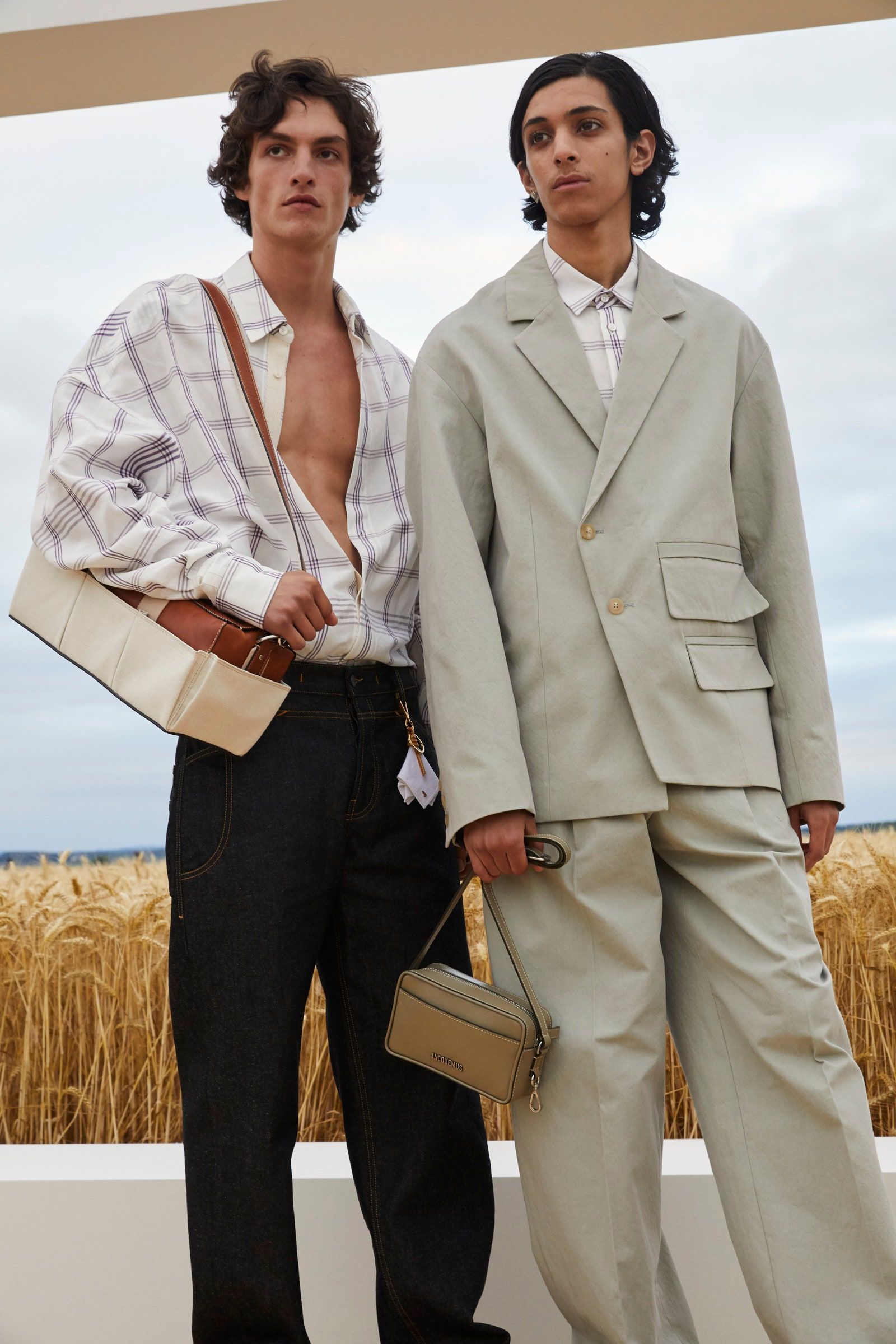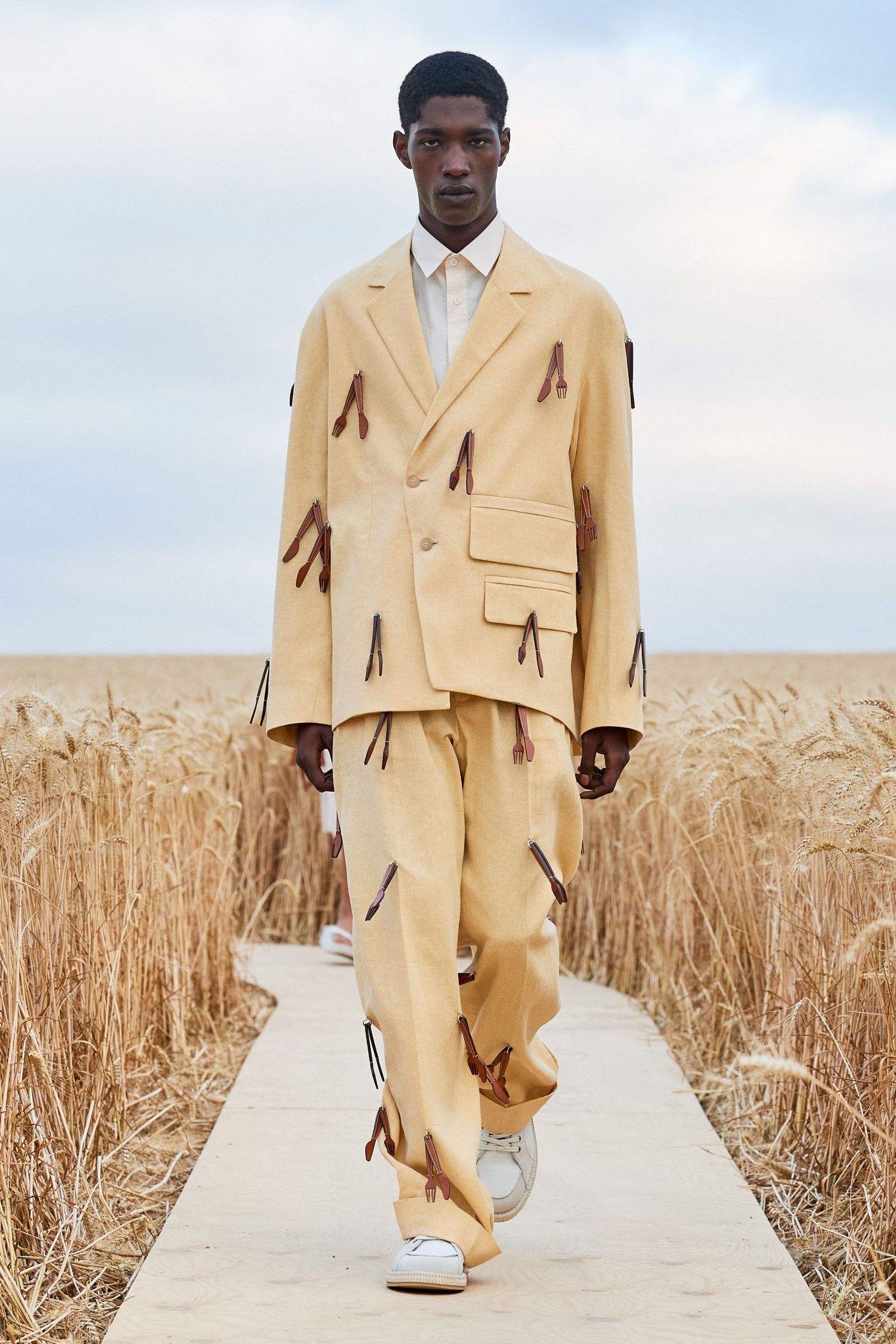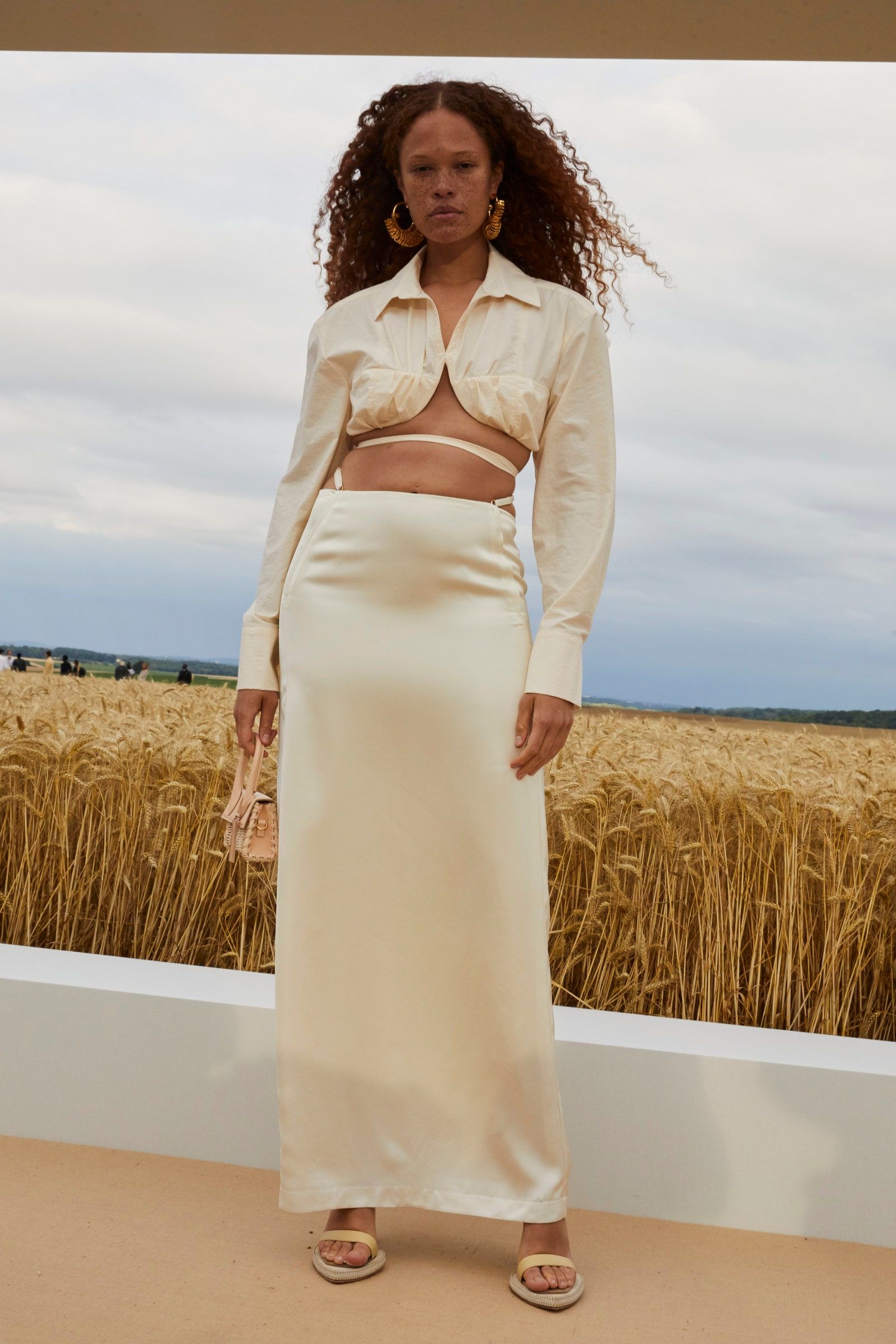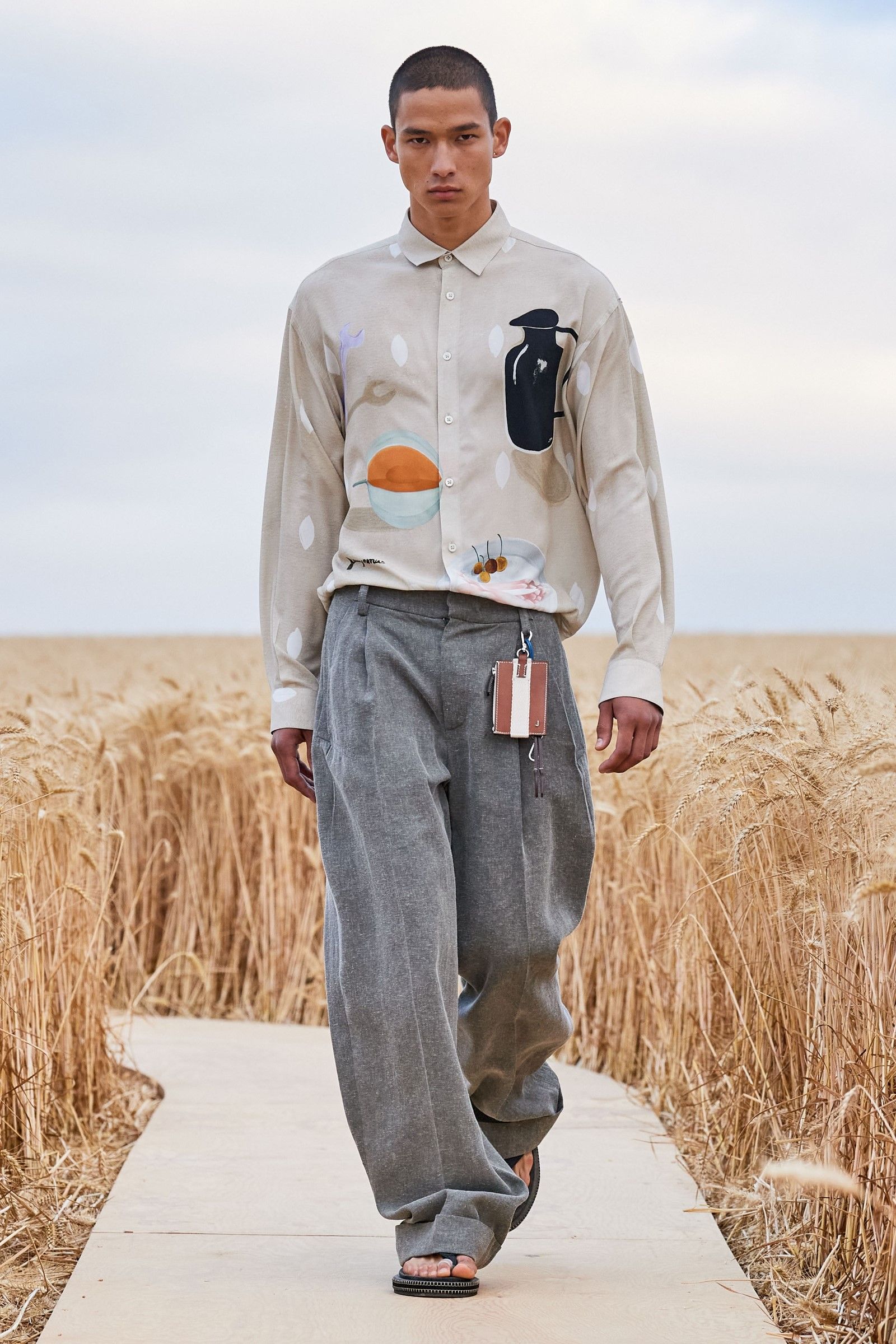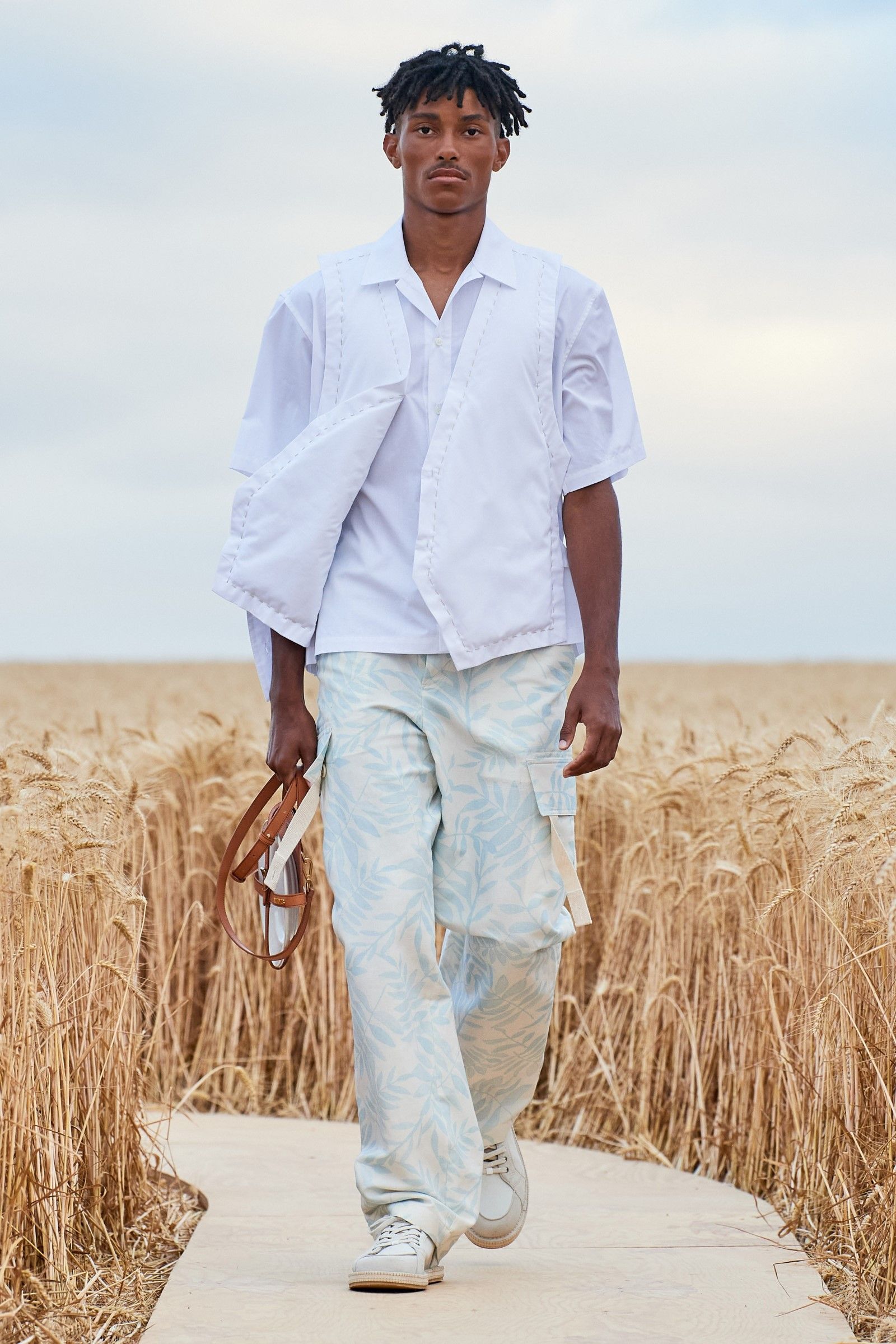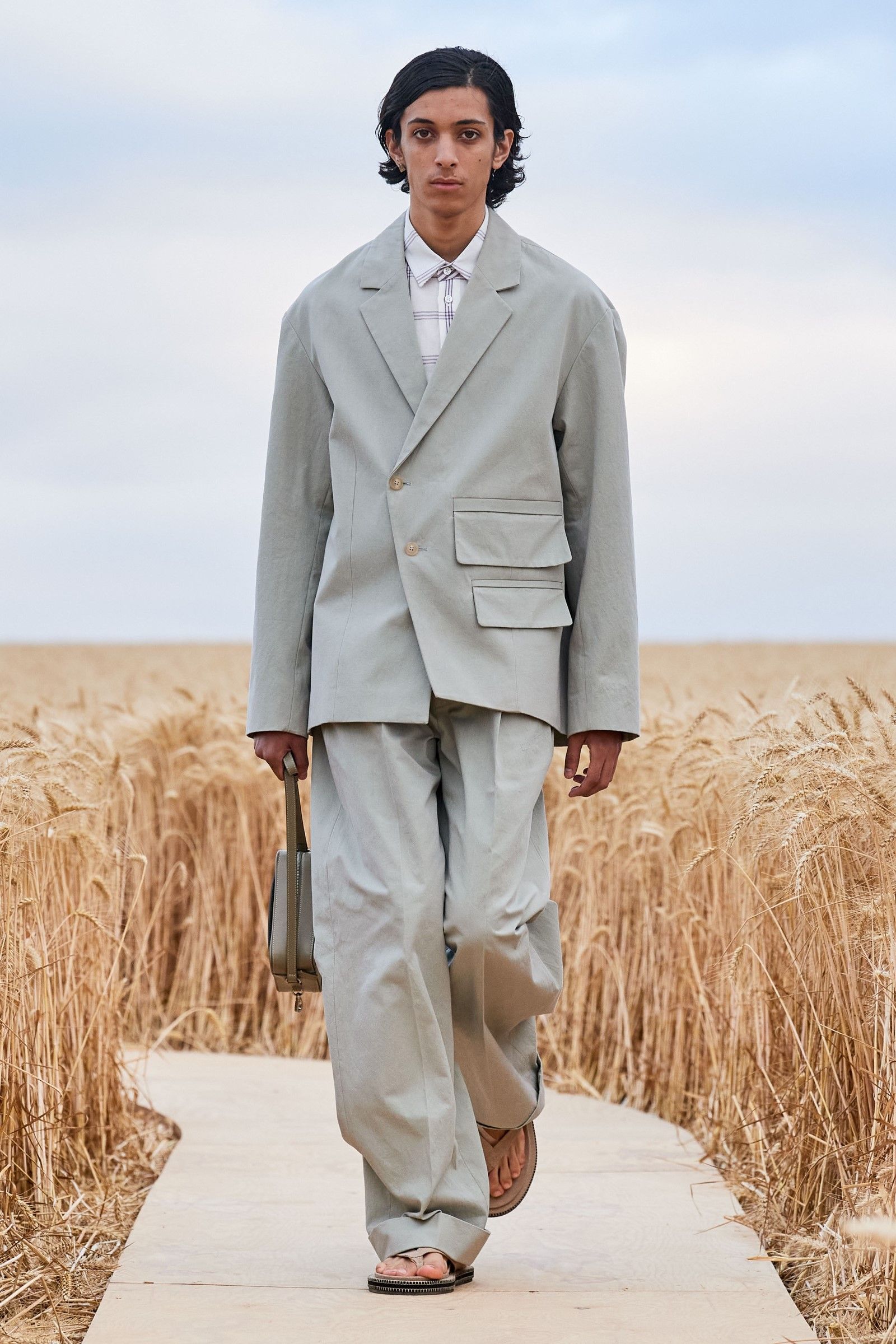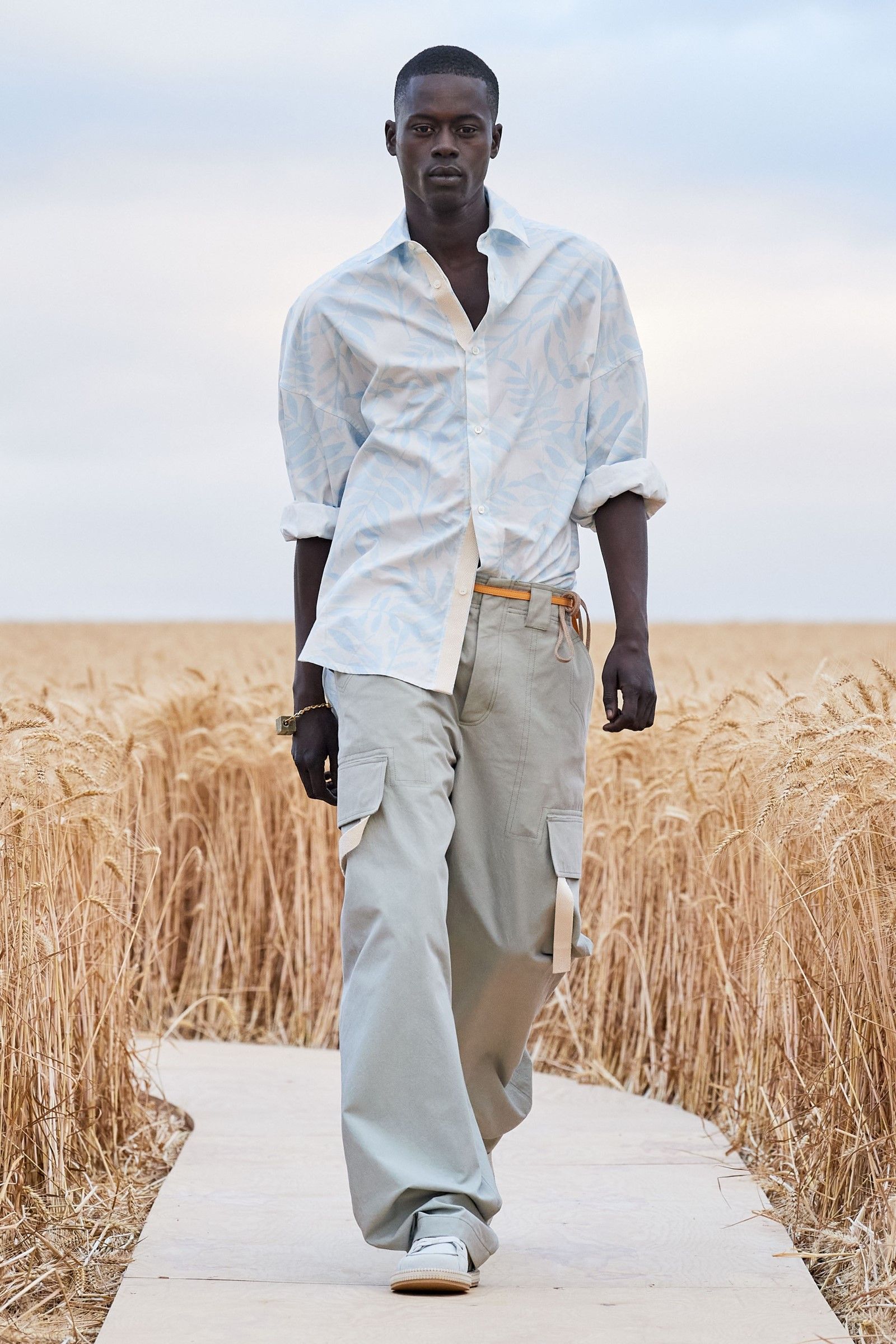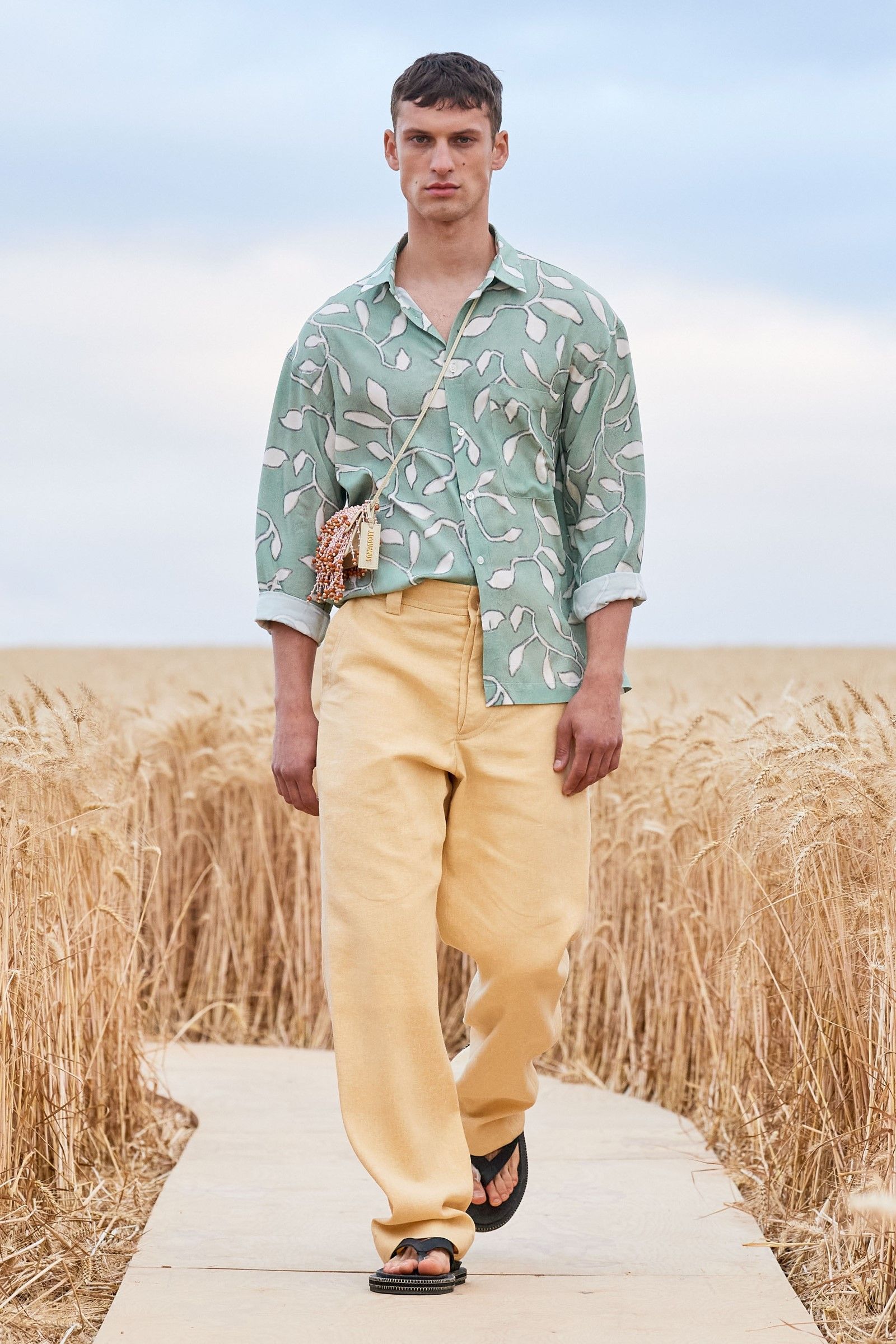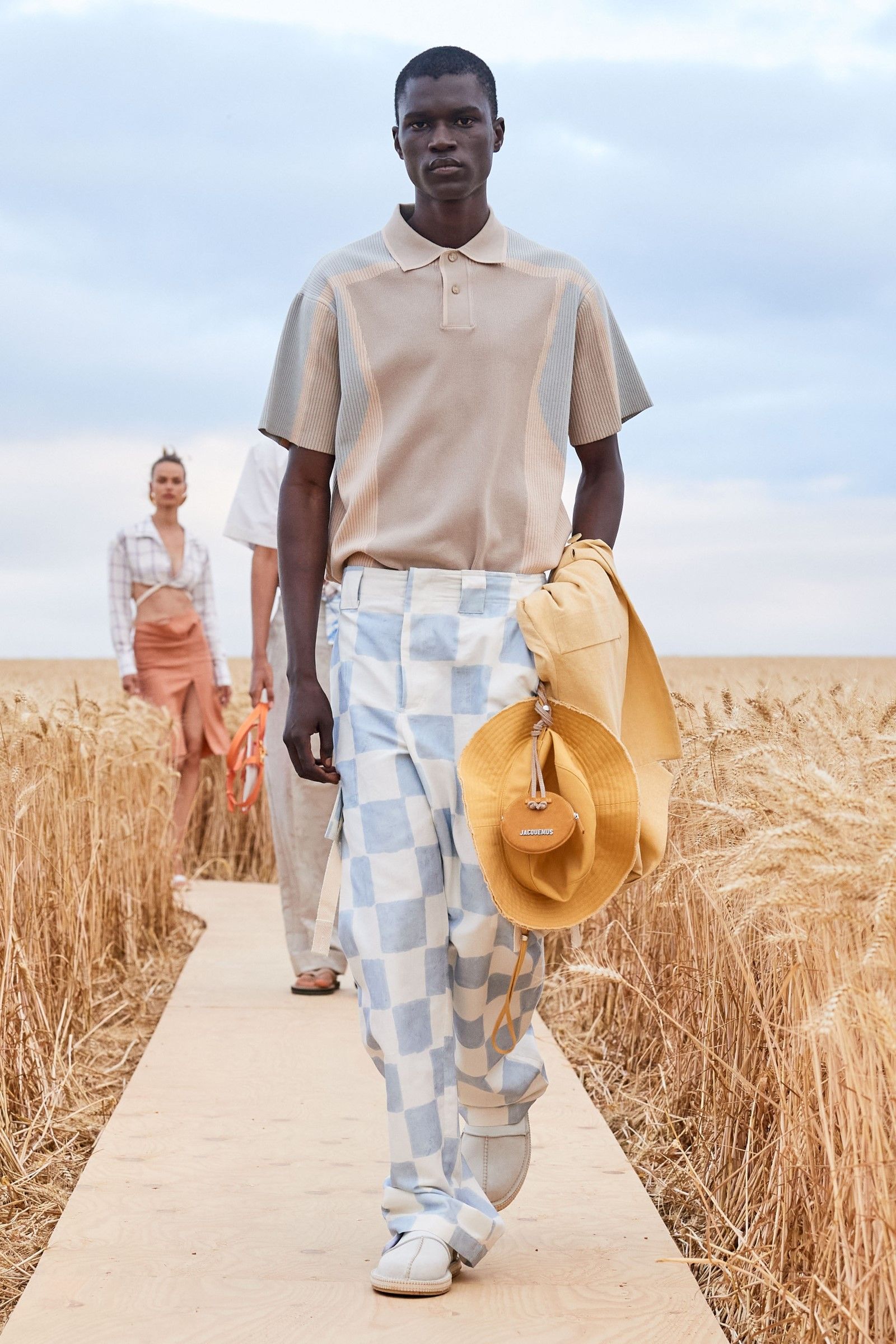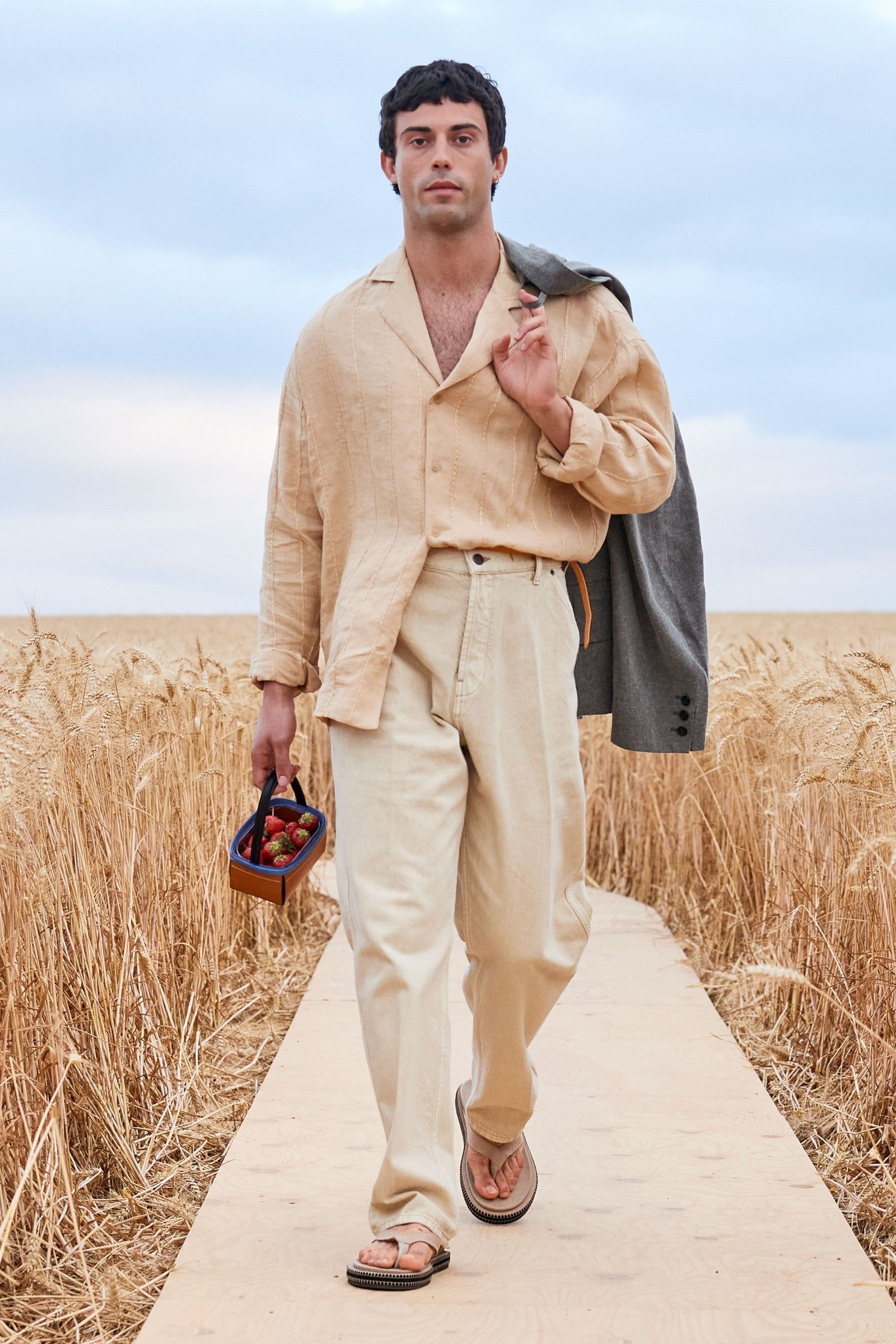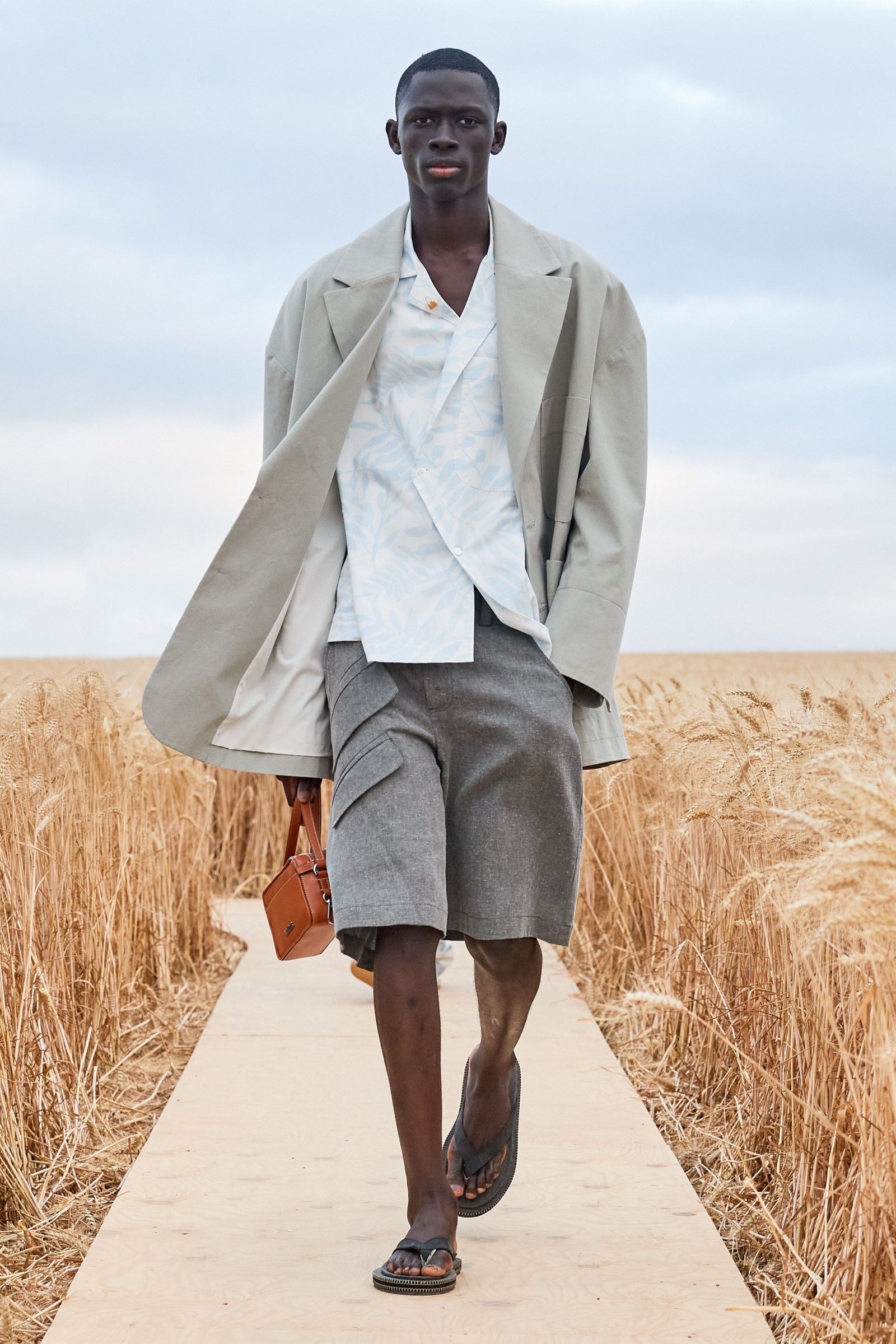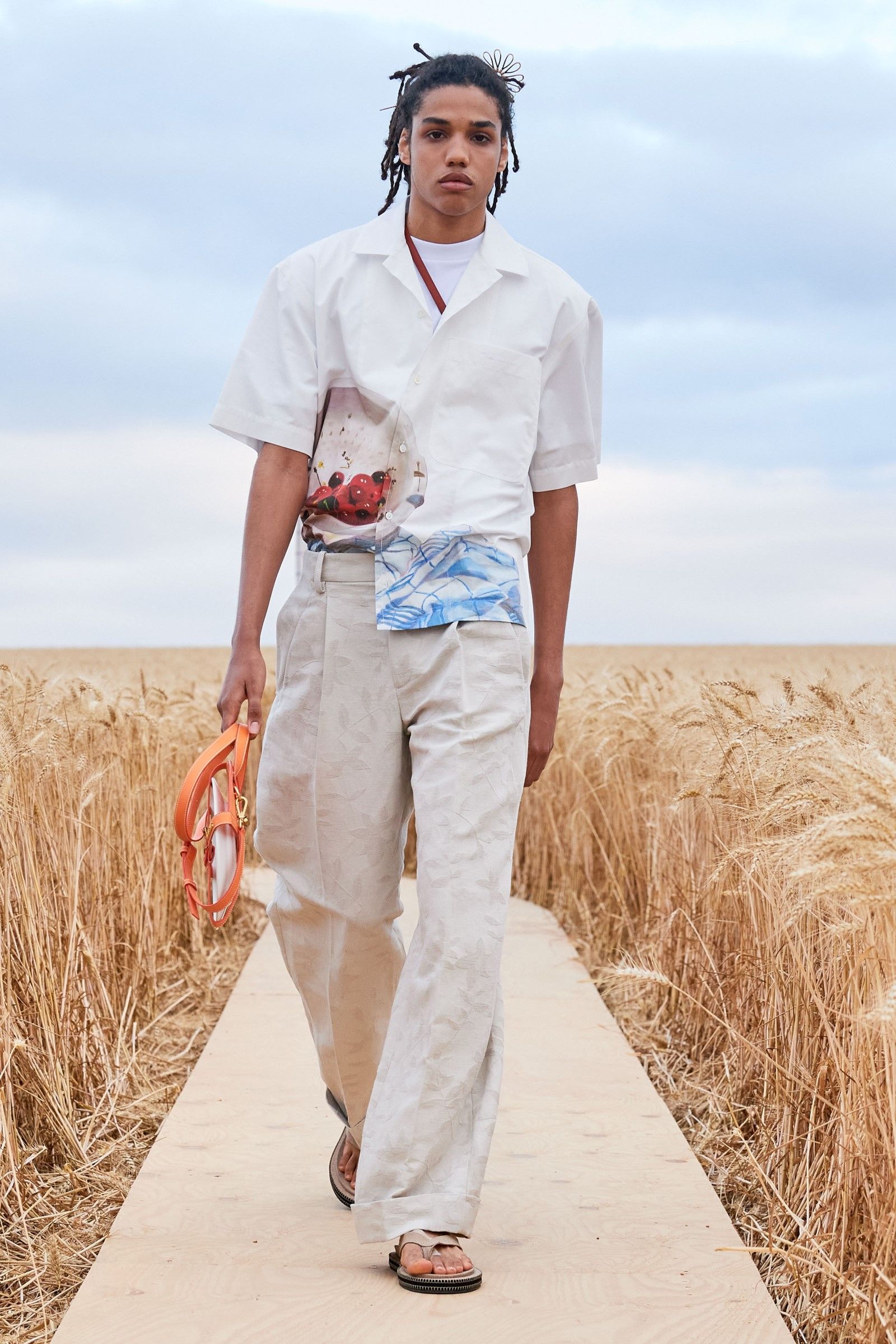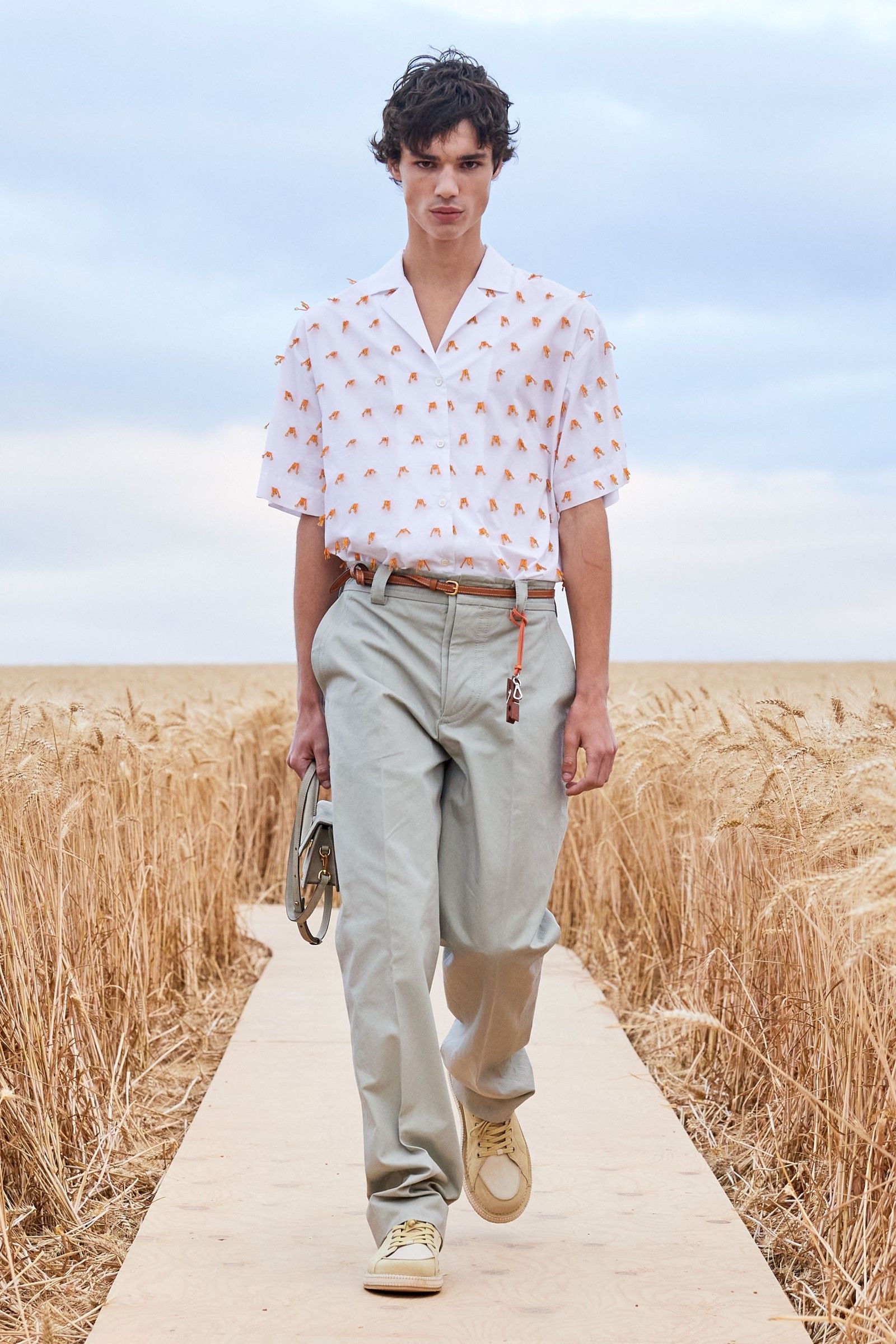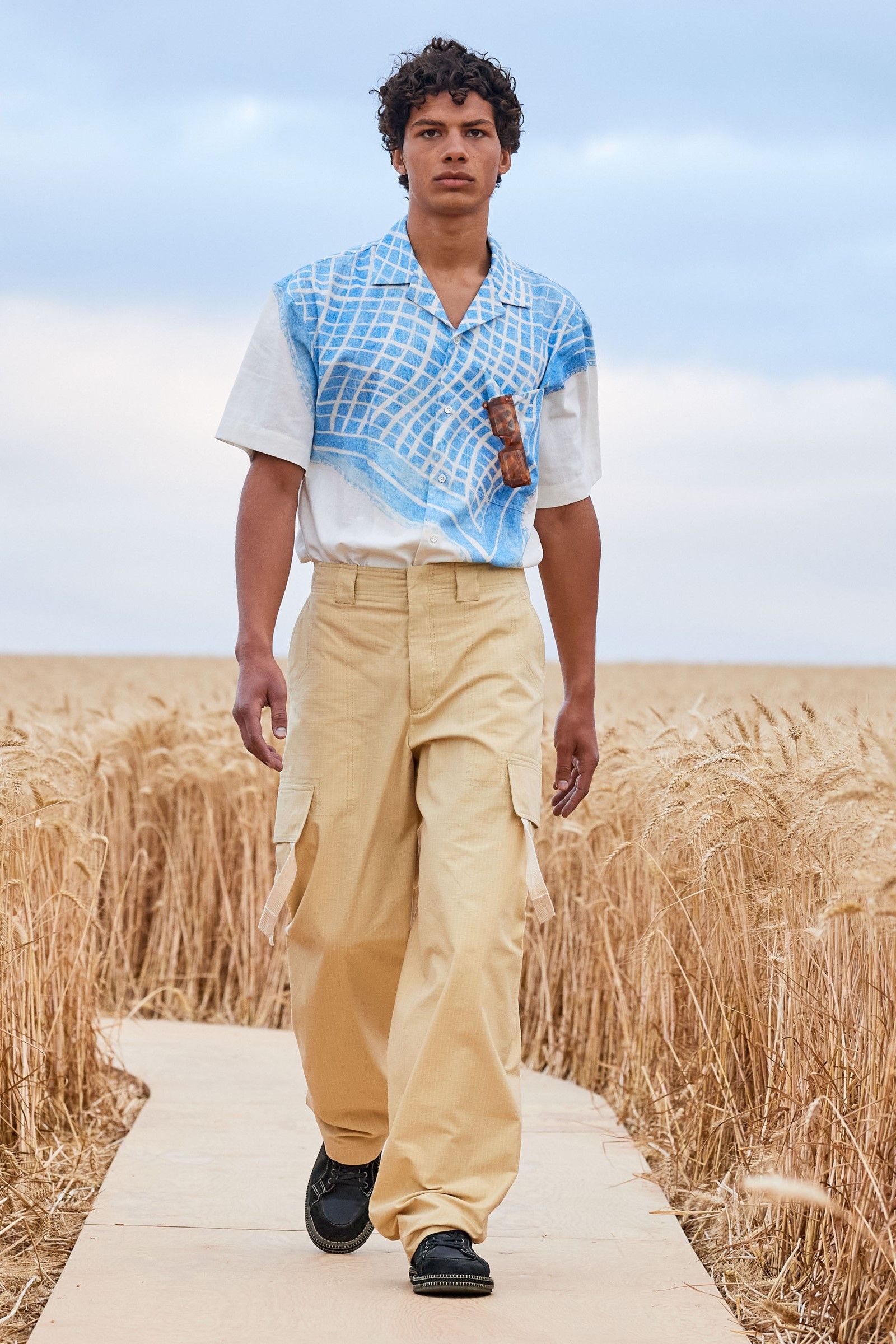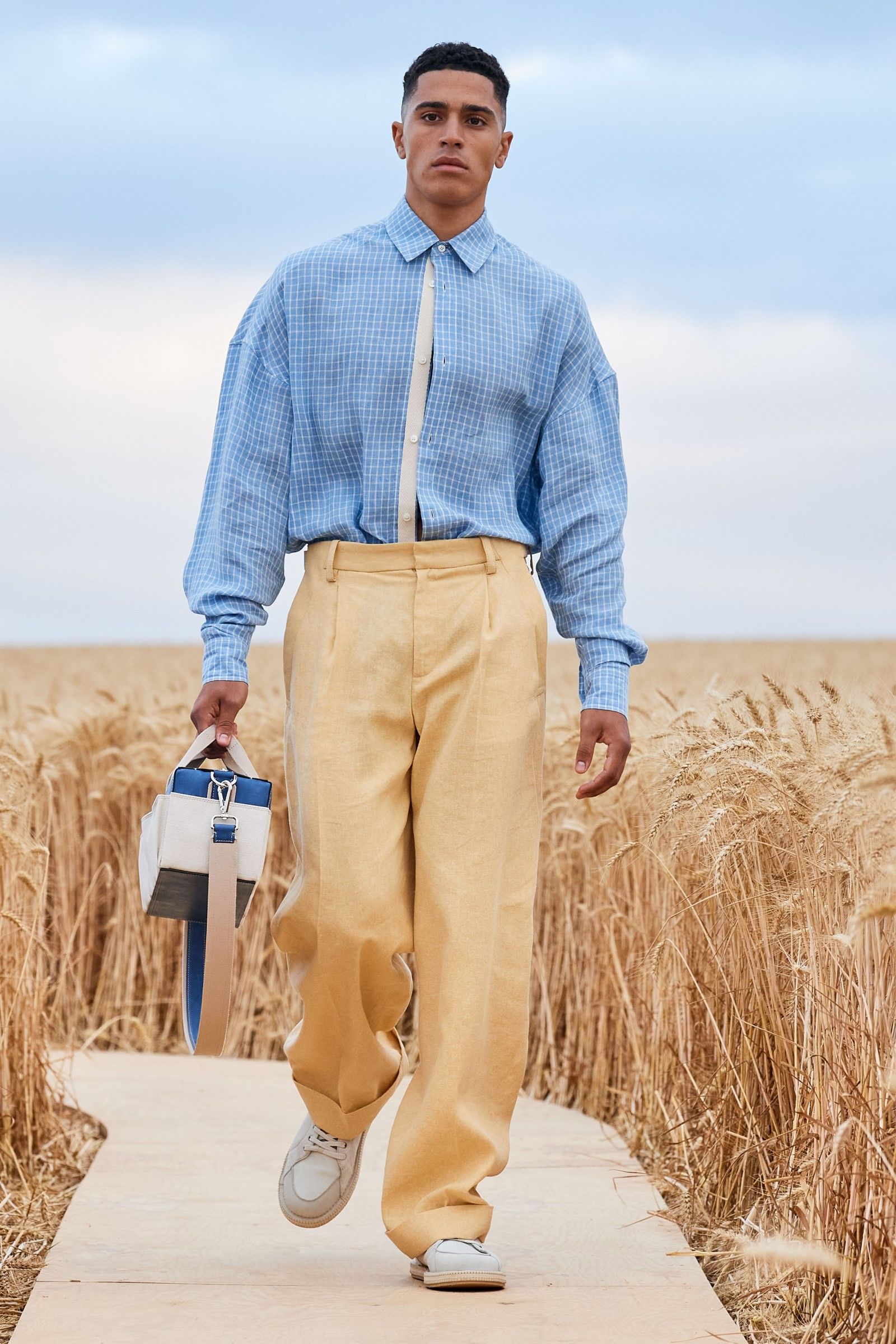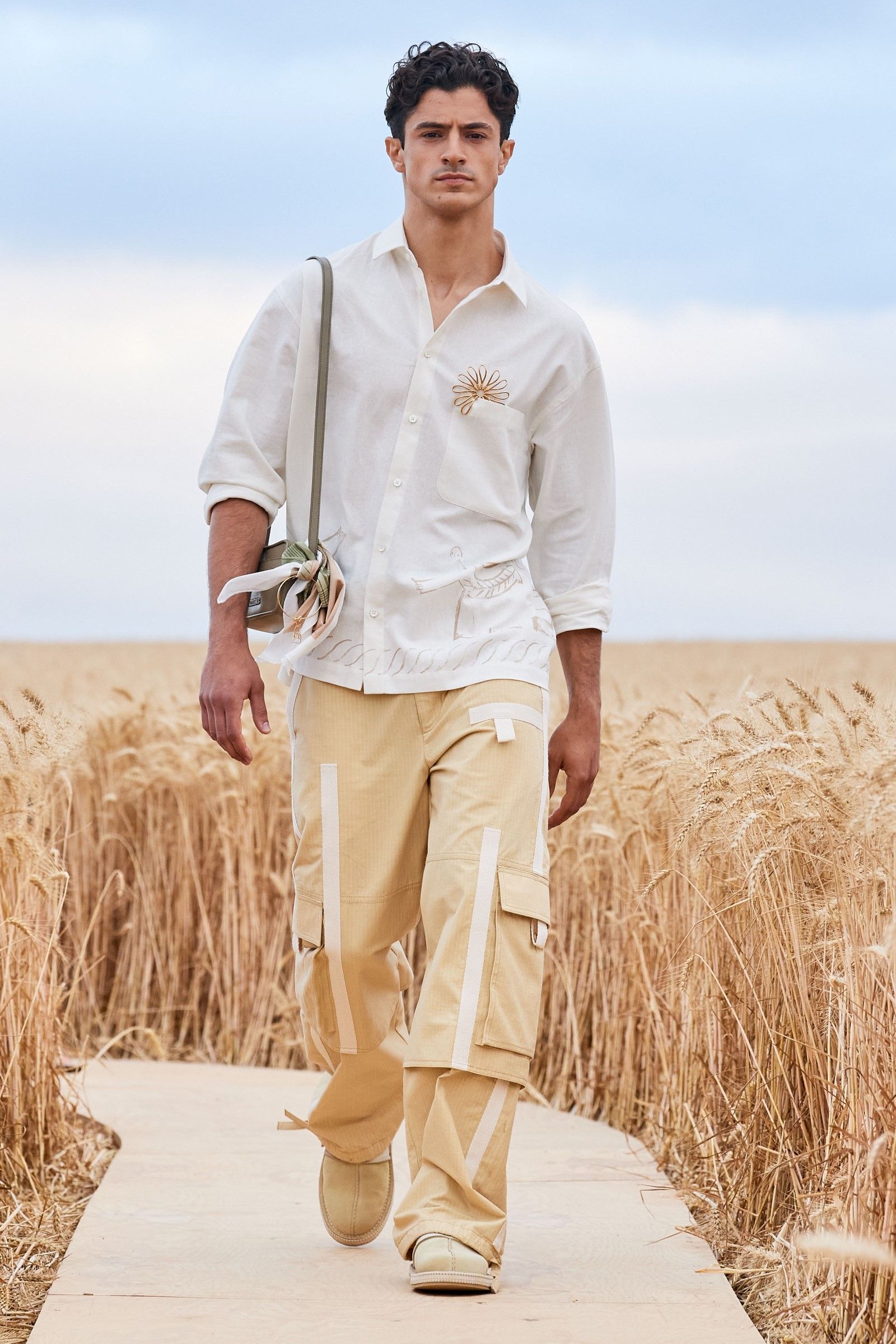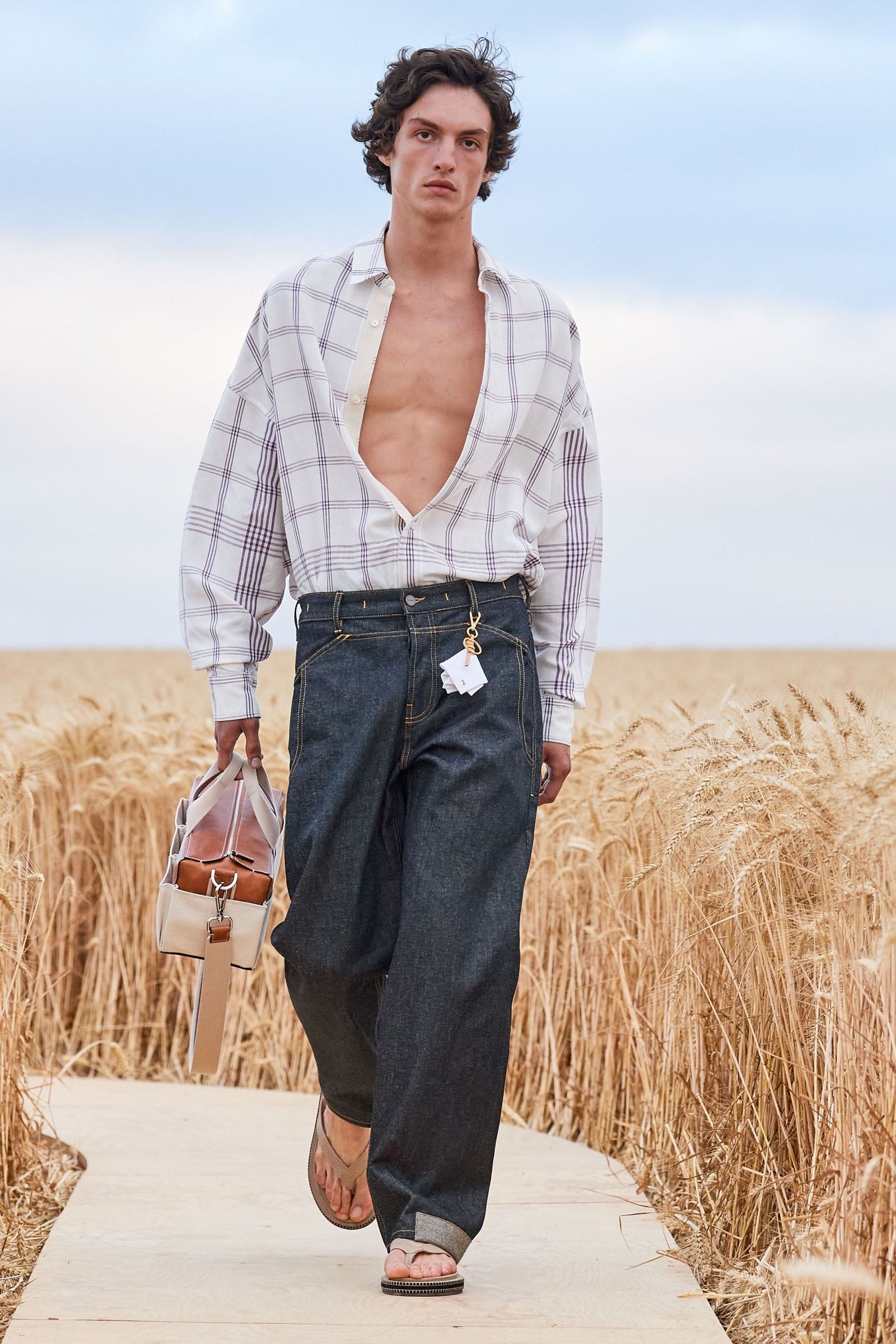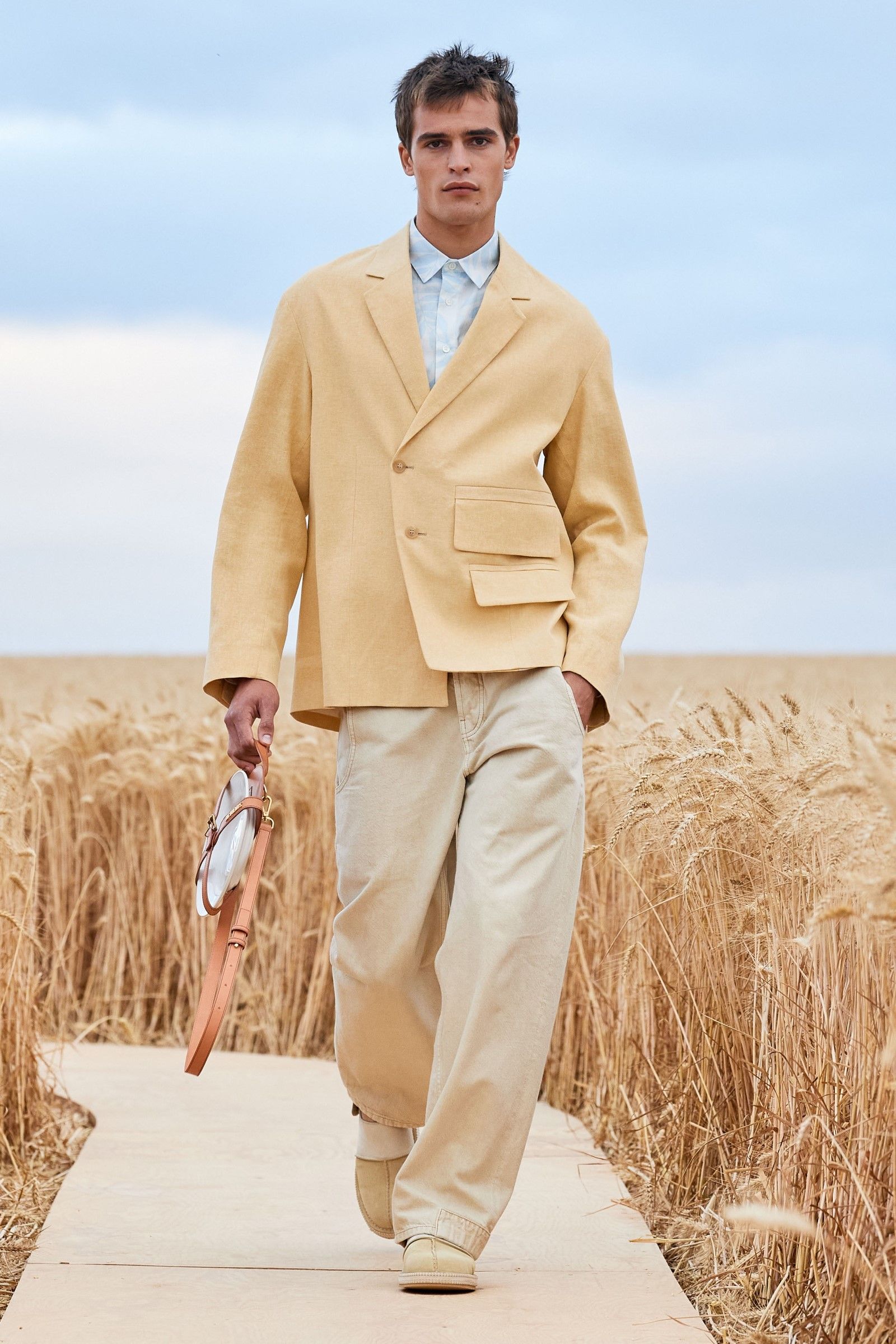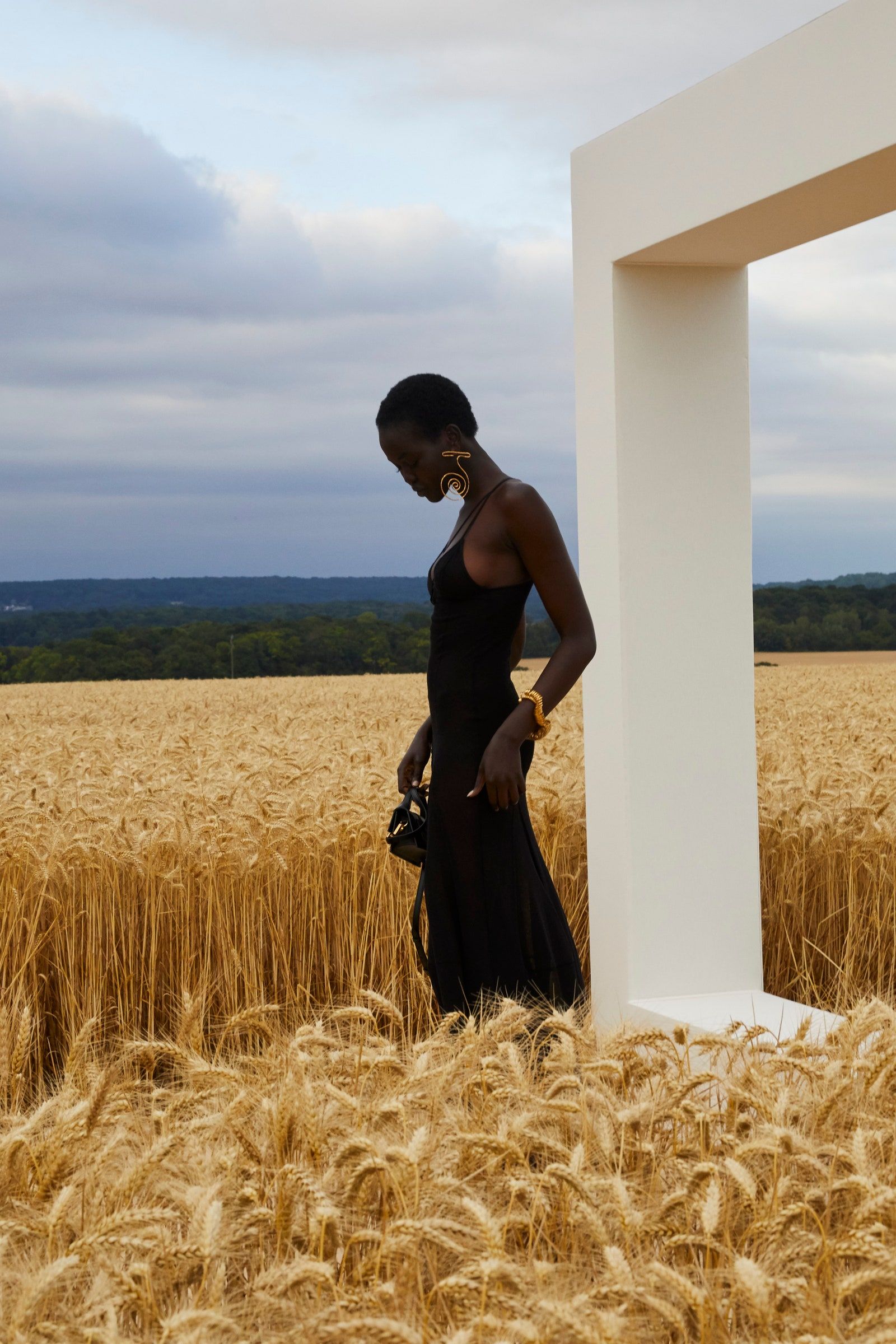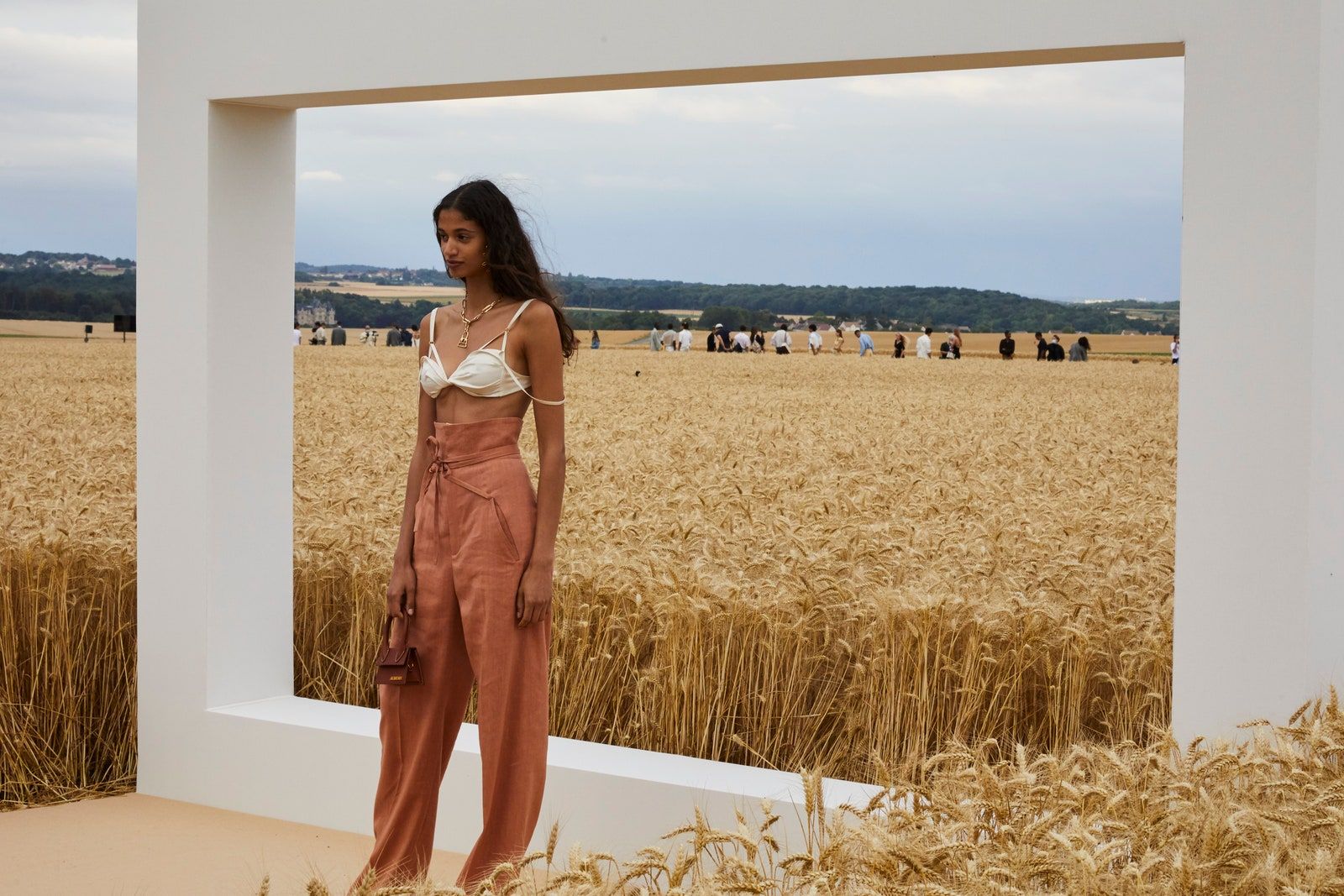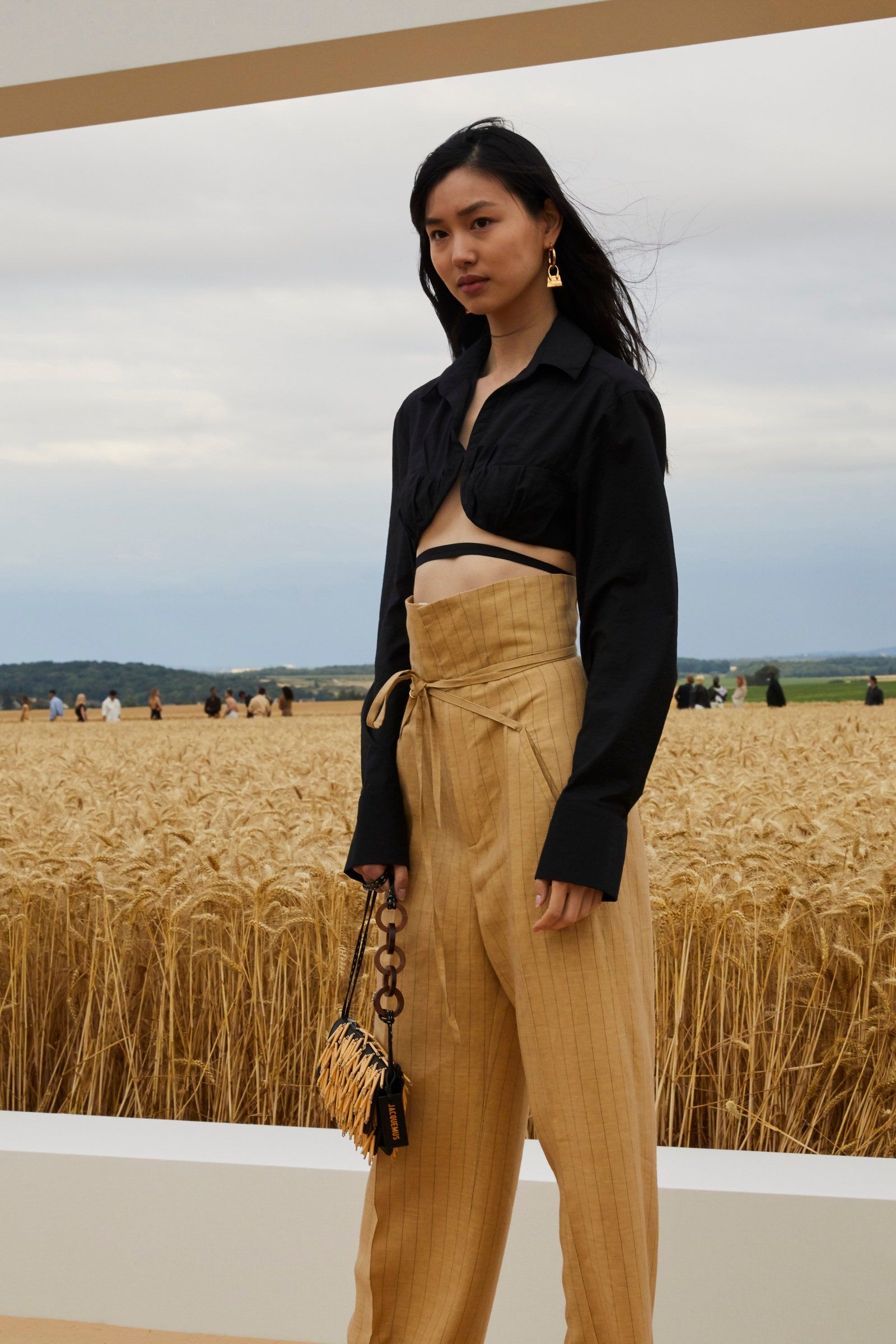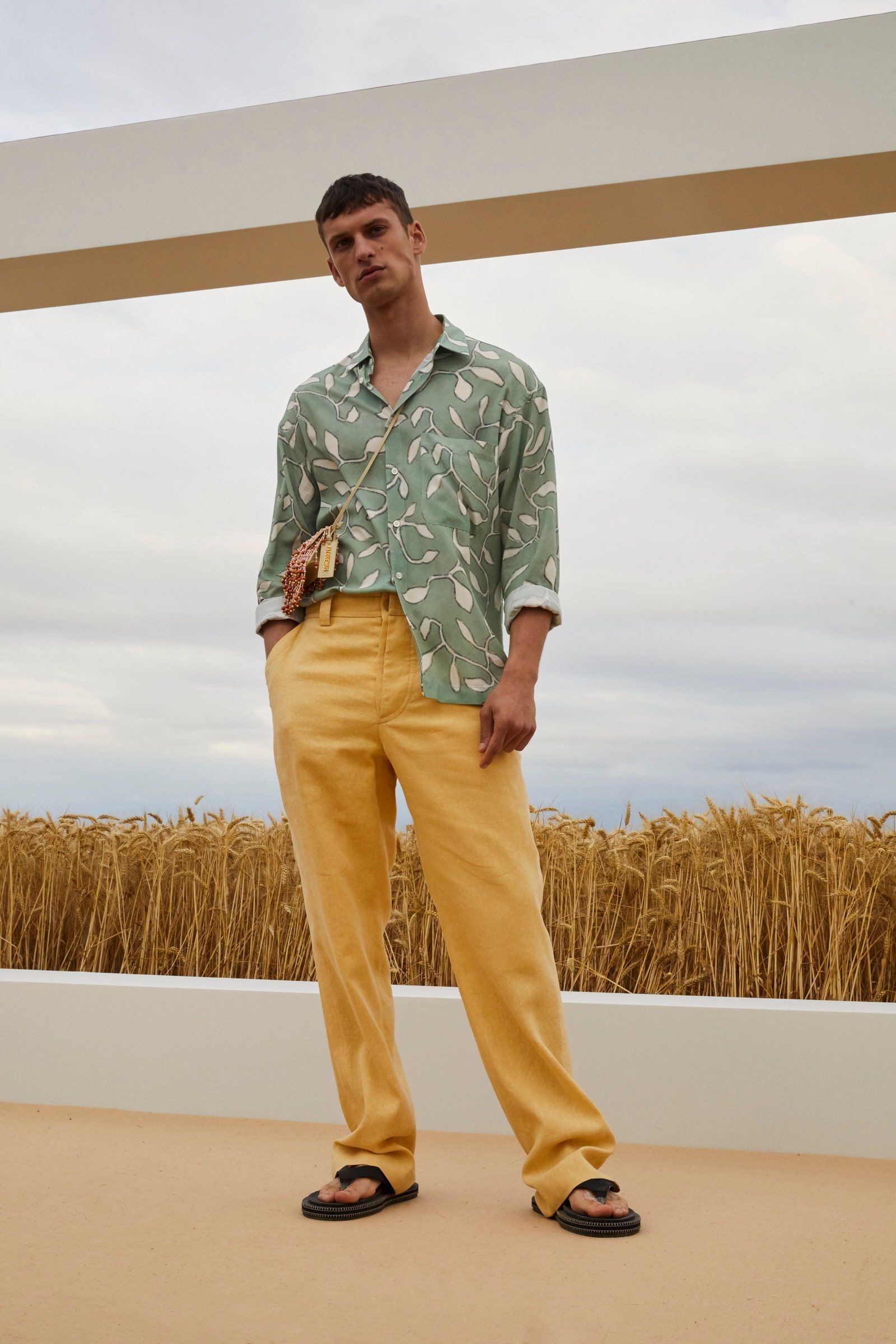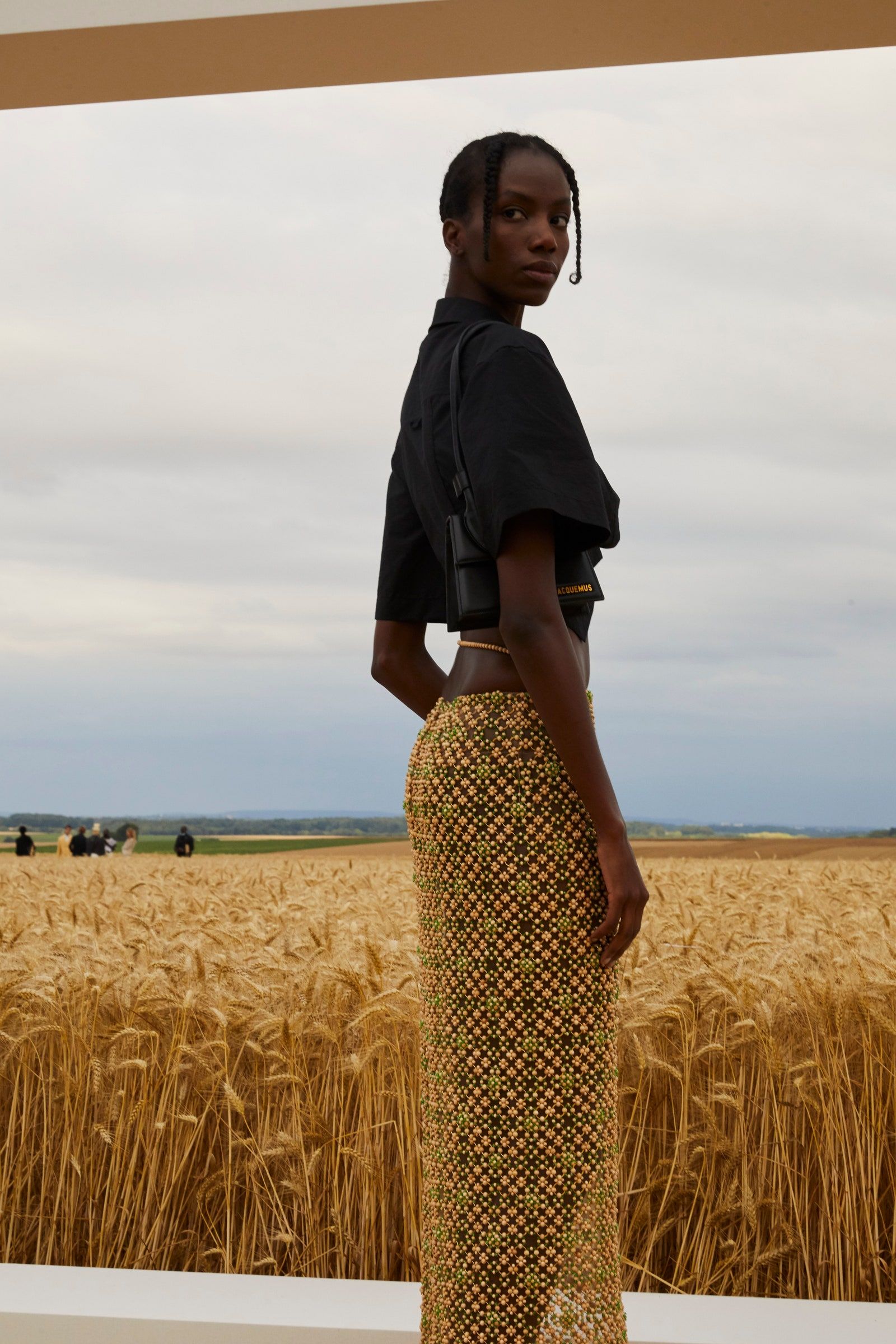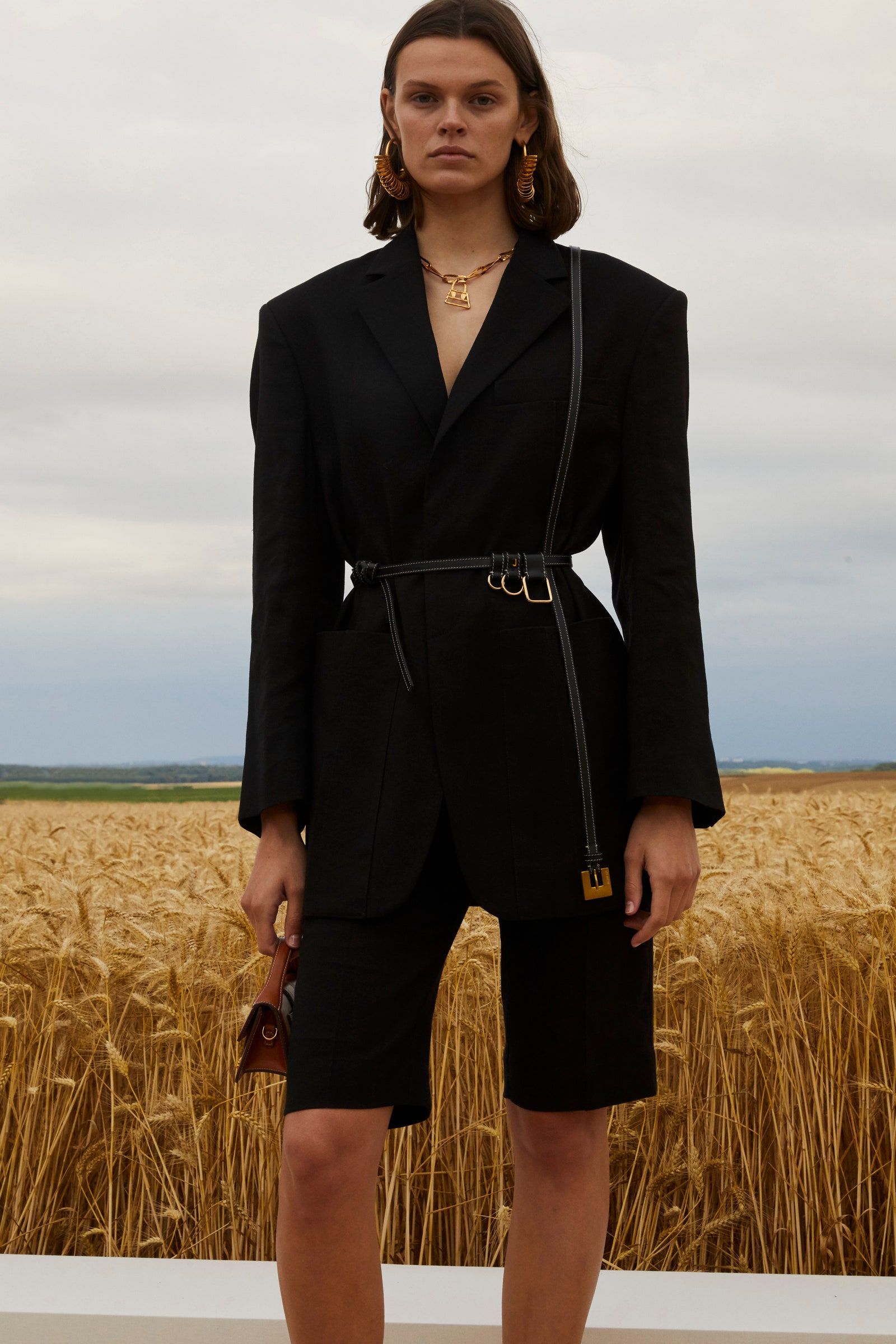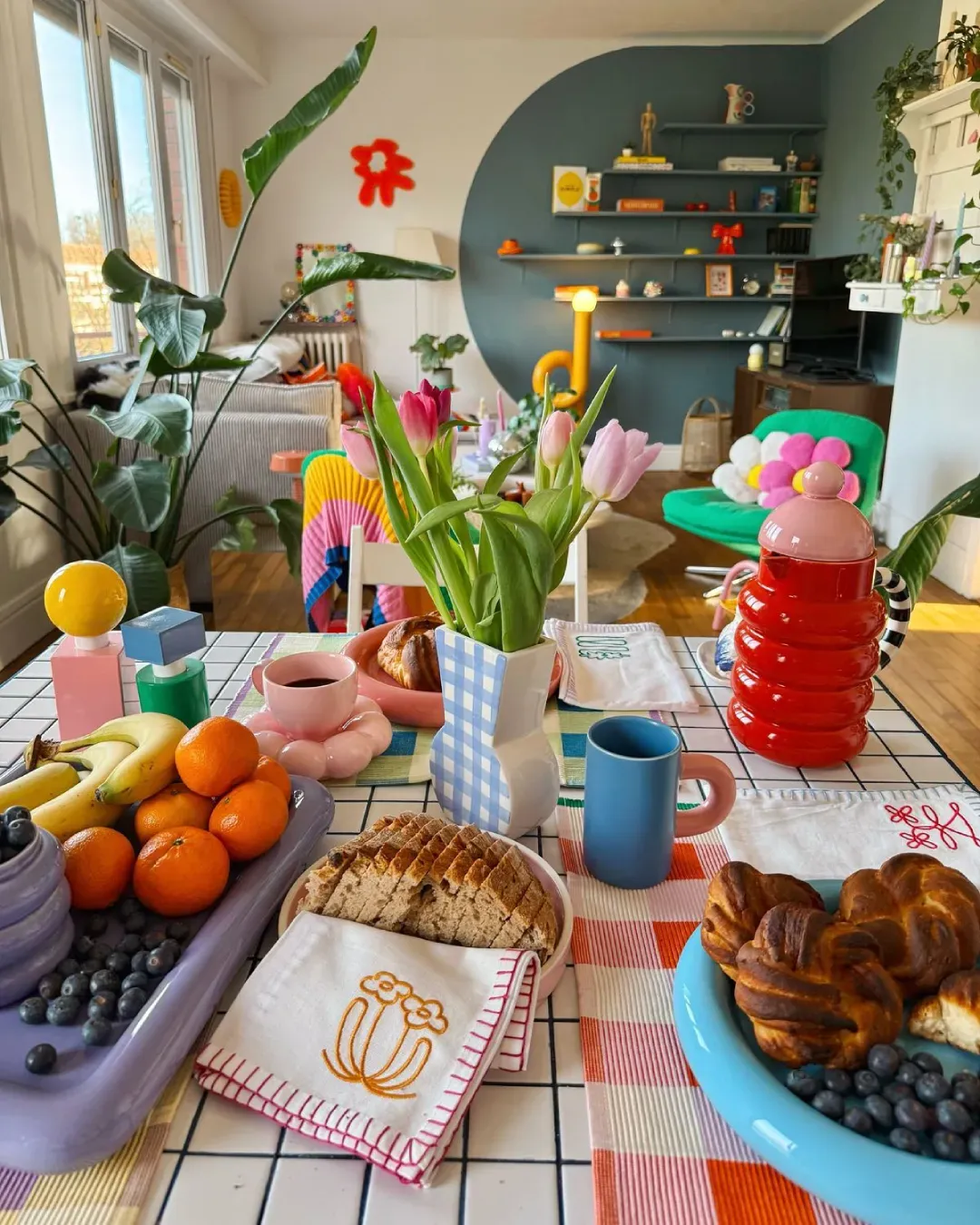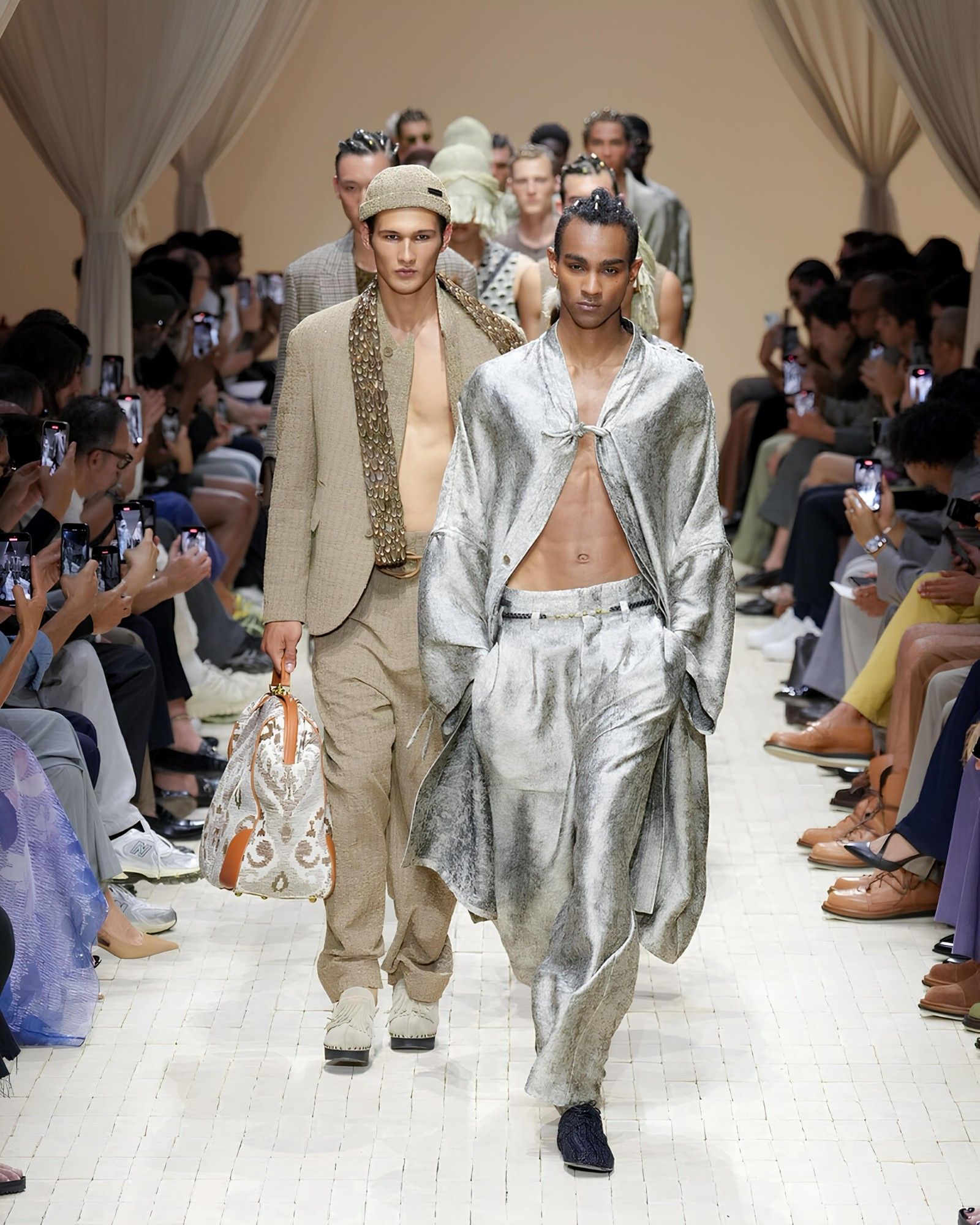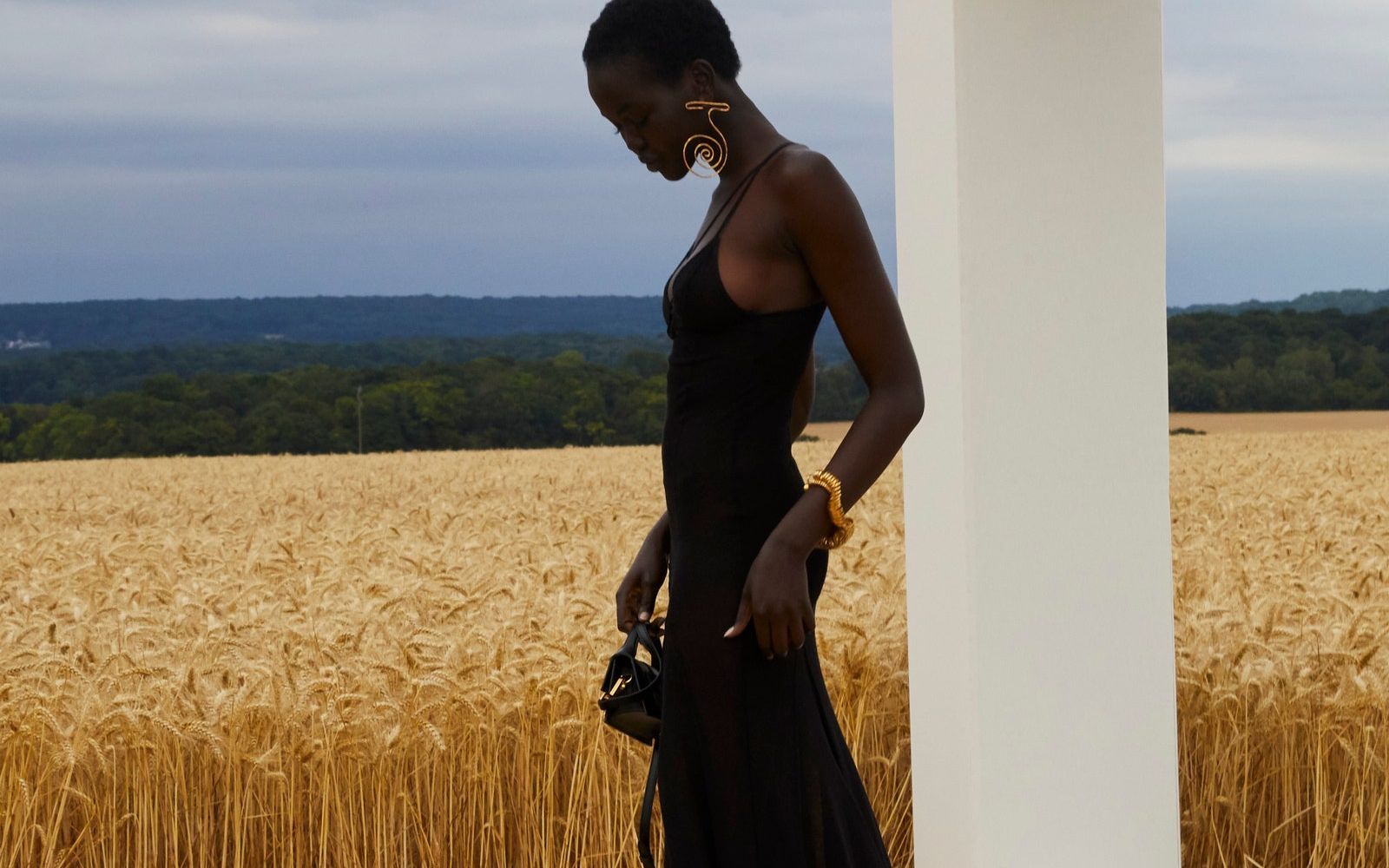
Jacquemus' show through the wheatfields "L'Amour" is the name chosen for the SS21 collection of the brand
A gray sky of clouds at sunset, yet bright. An endless expanse of blond wheat trembling in the wind, furrowed by a 600-meter-long ondulated wooden platform. One hundred seats, each boxed between the ears as high as the guests. Finally, a nostalgic guitar music, to which is added a woman's voice and which, finally, turns into a light piano music: Une Barque sur L'Ocean by Ravel. Meanwhile, fifty-five looks, male and female, parade in front of the guests – they have mostly the colors of the earth, but there is no lack of black and white, the clothes reveal and bandage, the details play with the body shapes of the models: this is this L'Amour according to Jacquemus. For his SS21 collection, Simon Porte Jacquemus did not want to resort to digital, as so many others have done – especially since his brand organizes only two shows a year. Speaking to Vogue, the designer explained:
«For me, the runway can’t be a video. It’s at the heart of what we do; it’s not superficial. It’s important to all of us to continue, just like a restaurant that reopens. It’s like a movie of a summer day. It’s our life».
The main idea for yet another spectacular show of the brand comes from a choreography by Alexander Ekman for A Midsummer Night's Dream and the Serbian film The Time of the Gypsies by Emir Kusturica: both include the idea of rustic ceremony, wedding in the fields, harvest festival. The show might have been a reminder of last year's one, set in the lavender fields of Provence, but although the overall concept might have been similar, the two shows had a rather different aesthetic: pharaonic and triumphant the first, quiet and discreet the second. The music, the few guests that mostly included the family & friends of the brand, the concept of the show, between country wedding and summer picnic among friends, and the narrow selection of looks recall an intimidating and domestic dimension, which must open up to the outside world after the long months of lockdown:
«With this smaller collection [...] we bring our interior worlds out into the open, interpreting the humble fabrics and objects we live with that have their own poems to tell. Within the home, L’Amour reveals itself in small wonders. Separate but collectively, we realized that the home is a place of endless inspiration. These impressions are what I wanted to recreate in this setting today, where we have been fully sensitive to the circumstances. ».
Both the male and female sides of the collection are characterized by a certain laissez-faire: men's blazers are built to look badly buttoned, some pants give the illusion of having the flap open, some clothes are draped on models like a bed sheet. Each dress seems to have been worn at the last minute for a relaxed garden party. If the aesthetic of the Jacquemus man is well firm and consolidated, the female one has the widest expressive range (as well as more space on the catwalk). The Jacquemus woman is comfortable with her body, and the brand's clothes create for her looks ranging from professional to playfully cheeky without losing aesthetic consistency even for a moment.
Between the fabrics with cut-outs in the shape of a heart, the transformation of everyday objects into small accessories and prints (such as the shirt that reproduces the bottom of a pool, the embroidered cherries and table cutlery transformed into small objects of leather goods) Jacquemus seems to have taken inspiration, for this season, from the style of Margiela – but without the experimental mind-bending of the Belgian and with all the romance, the candor and inventiveness of a child who is playing. With the added merit of being able to reinterpret according to their own canons, and perhaps better than many others, the feeling of post-lockdown life:
«What’s so beautiful about L’Amour is how it can endure—sometimes even grow stronger—in the absence of people being together».










































